|
When you are on a tight deadline for, The Blackmoor Gazetteer. And also - When you are heavily ADHD and you should be working on one book, but you can’t feel inspired or motivated. Then suddenly you get an idea and are ready to work on it, only your idea is for another book entirely! I’ve been working on my new RPG book, The Terror of Spiral Keep, with the goal of making a setting module that teaches referee’s how to infuse their own game with a feeling of exploring the unknown and psychologically disturbing elements of horror. One main premise I have been trying to get across to referee’s is that you don’t need rules for fear, or sanity, to make your players actually feel terror. All you gotta do is make their skin crawl - in this case I mean it literally. Since it will be a few more months before TToSK is finished, I thought I could share a chapter draft on the blog and just throw out some ideas on using horror themes in RPGs. This is written toward a Fantasy setting, but it can work in pretty much any old school game you may be playing which also has magic, or psionics in it. Creepy Crawlies This is a classic horror trope and I’m not inventing anything new here. I’m just recycling what works in both sci-fi and horror in order to creep out my players. *cough cough* - Alien. The Burrower, a.k.a. Skin Borer Skin borers are anything which is parasitic and literally enters a player’s body somehow. If you describe how one of the your players has had something chew through their skin and is now inside them, everyone at the table is going to be saying “EEEeeeewwwwww!” Ideally, you want to personalize what this is for your own game, so the players who have read about these won’t be able to identify what it is ahead of time and run like hell. While these creepy crawlies are always small and about the size of a beetle to the size of a mouse, yours can be anything, a small mammal, an insect, a strange alien fish that crawls on its fins, whatever suits your mental image of creepy. What is critical here is the encounter and how you play it out. Just to help you get a feel for this thing, let’s stat it out. I've even expanded the D&D stat block to conform to AD&D for all you AD&D referees. Burrower/Skin Borer No. Appearing: 1-12 (it’s always fun to use the D12 and it is the most under rated die of all of them.) Armor Class: Variable - are yours fast moving or slow moving, soft or crunchy. If fast give them a 4 to 2 AC, if slow 9 - 5, same for crunchy and soft. Apply what you think is most effective. Movement: Is your creature a Dropper or a Rusher, more on that later. Hit Dice: 1 HP % In Lair: Technically these will almost always be In Lair because they tend to appear on or near their former victims, or places that have been covered in blood. Treasure Type: There is usually some kind of equipment or small treasure in a sack nearby. Although this is not planned as bait, players will be lured to the area by the goodies lying about. No. of Attacks: See below Damage/ Attack: See below Special Attacks: 1 per round, the first attempt is a roll to get through armor and the second is a roll to pierce the skin. Special Defense: Outside of the body they are difficult to detect, once inside a body they can be seen easily enough - they need to be cut out in order to kill them. Intelligence: low, insect like. Alignment: it’s up to you - do you want them to throw off players by emanating evil, or do you want them to be devious and neutral? Size: Very small. That is pretty vague I know. What is important here is the purpose of this encounter. We aren’t out to kill any players, though it may happen. What we are trying to do is cause them to feel very uncomfortable. Let’s begin with the encounter type, Wandering Monster, Surprise, Fixed, Decoy, or Compound Encounter. As a Wandering Monster Encounter these can arrive in the form of a person who approaches the players. Roll up a character and figure out what kind of NPC they could be. Is it a crazy old man in rags wandering the dungeon while moaning and screaming in pain? Is it a beautiful man or woman in elegant clothes? How about a lone halfling, dwarf, or elf? Play out how this seemingly benign person who has likely dropped their weapons and only wants to find the safety of being out of the dungeon can transfer a burrower to a player. It won’t be the NPCs objective to harm the players, It is merely a result of how these parasitic critters behave. Does the person appear and interact with the players, or does this person appear and then collapse on the ground as they are dying with only 1 HP left. However you choose to run this situation the NPC is not the threat. They could even be Lawful Good. Sadly, they happen to be carrying something very dire on them which will attack any players who gets too close. No matter what the situation, because these are small critters, they are able to surprise on a 1-4 using the standard OD&D surprise roll of 1 in 6 for normal encounters. They are small and may not be moving right away. Once seen the players can avoid them. As an old school referee’ing technique, if they are hiding in someone’s clothes ready to be passed onto a new subject, then unless a player states they are examining before making contact, well then, players don’t get a die roll to perceive the presence of these vermin. A good clue that something may not be right, is the presence of ruptures in the person’s skin where the creatures have entered and then sometimes leave. Again, a player needs to state they are examining the subject. There are no freebies in old school play, you can’t just roll dice, you have to state what and how you are doing something. This is not a video game on paper. The Surprise Skin Borer happens if a pre-encounter die roll comes up as surprise. This encounter is also similar as a Fixed Encounter the Referee has placed in a location within their dungeon. Generally these things hang out on or near present or former victims. In this encounter your players will come upon a place which is splattered with blood. They can smell it and they can see it clearly on surfaces. Maybe something was brutally murdered here and then dragged off. Perhaps a trail of blood leads away from the location. Or, a former victim of these creatures is lying on the floor in a hallway. They may have a sack of coins and gems spilled on the floor next to them, and even on occasion a magic item, or a nice suit of armor. The little burrowers might be hiding in a crevice in the floor waiting to rush out and attack a player, or they may be lurking on the ceiling above and waiting to drop on unsuspecting players, hence the question earlier regarding whether your vermin are Rushers, or fast moving, or Droppers, who wait for an opportunistic moment to jump out of a hiding spot, or drop from above. The Decoy is similar to other situations. D&D players are really paranoid of wooden objects like treasure chests and tables for some reason. Thus, if you have this kind of object in a room and it is entirely benign, you could place some Droppers on the ceiling that can attack players even if they are using a ten foot pole to check for mimics.
Of course a wood table is a bit dull. Why not make the table creepy too and have it be dropping with fresh blood. Decor and mood is so important. Martha Stewart might even say "It's a good thing." A Compound Encounter might be something such as surprising a group of evil priests in a secret ritual chamber where they are applying these creatures to a sacrificial victim. Once the evil cultists are dealt with one can proceed to examining the rest of the location. Did a jar full of these creatures fall on the ground and shatter. Are these creatures on the living, or dead, victim. There are so many glorious options here and all of them are not a good result for the players. As a referee I have so much fun running vermin like this vs. my players. It is my nature as a referee to mentally torture, and dare I say, trigger my players. All I can say is, if you like this kind of game then come play against me sometime. Otherwise, avoid me at all costs. In our house group half the players will look at me after an encounter like this and shake their heads as if to say, “that was awesome, even if my character died horribly.” The other half gives me the kind of look which I read to mean as, “that was totally disturbing and wrong, what happened to you as a child to make you think of things like this?” The funny thing is - they keep coming back for more! Damage Before we talk about Attack, I think we need to discuss what Damage is for these. Damage is mostly psychological. The gaol is to create an experience similar to watching a favorite horror movie. Thus rules related damage is minimal, but perhaps emotional damage is not. Attacks are a variety of events in a real RPG, in that different variables will require different methods - this is key to properly running most older systems as referees gain experience in how to adjudicate anything that happens and players can literally opt to try anything as well. Most game systems that have tried to create a universal mechanic of die rolls end up destroying the immersive aspects of a low rules high stakes RPG. Ideally, these encounters work best when using earlier game systems. This may sound like an ‘edition war’ type of rant where I am claiming to only play the correct, or right, game system by using one of these older editions. That is not what I am saying at all. All I am saying is that the experience of these older systems is different from newer systems. If you want to experience an immersive and terrifying RPG it is best to play with a low rules game system. Damage caused is 1 point on the first successful attack to pierce a victims skin. The creature has gotten into the player’s body and can be seen as a lump under their skin, much like a mouse running under a bedsheet. This is the main reason for having these be smaller critters, we want this disturbing descriptor of the event. What if a player only has one hit point. It would be a shame to lose out on the entire encounter experience by letting them die. Hit points are abstraction. Thus you could tell a player, you lose 1 half hit point. Nothing in most rule books says you cannot split HP into fractions, and also, this attack is not really big enough to kill a PC, it never should be. Perhaps if a player cannot get rid of the vermin - they may, 50% chance, take a point of damage every 12 hours as the creatures crawl around under their skin eating whatever it is they like most about their new home. On a successive combat round after the player has been ‘invaded’ they must roll a D20 and roll lower than Intelligence or they are overcome by the trauma and the pain and cannot do anything truly useful this combat round. This happens every combat round. How does one fight these things? It’s simple, the players get to do even more disturbing acts out of their own free will - they must cut the things out of a victim with a dagger. It may be worth putting a knife over a torch to sterilize it first too. Cutting always works, but the player takes damage based on a D12 roll. Since most people would not be well versed in anatomy this can lead to serious problems. Good clerics are the exception, trained in the healing arts, they can cut it out and will only do 1 point damage. All other PCs must roll a D12: 1-6 = 1 hp damage; 7-11 = 1d4 damage, 12 = 1d8 damage (Oops you must have hit an artery!). If you are playing AD&D, and or using a class like Rangers, or Druids, they too can do it without causing major damage. In my game being at zero points causes unconsciousness. Thus cutting one of these out should not kill a player, but now the party may have to deal with carrying the PC out of the dungeon. Attack! We’ve gotten this far, how do these things conduct attacks? In the first round assuming a player doesn’t see them and manage to smash them, they get an attack roll vs. AC9 to see if a Rusher manages to climb onto and up a players leg, or an arm if the player is touching something the creature is on. The same attack is made for a Dropper, failure means it falls on the ground near the player and the player can attempt to smash it in the same round. If the player was surprised, they get a 50% chance, or 1-3 in 6, to notice something move through their field of vision, or bounce off their body. Once on the player, the creature will try to eat into a players skin or get through armor in order to do so. The next attack is vs. the player’s armor class. Better hope you are the Fighter in plate armor! The second attack causes 1 point of damage and means the thing has gotten in you. It should be noted that a roll of 20 on the first and second attack always succeeds - thus even if a fighter is wearing magical armor that would make a low HP monster unable to succeed, they still have a tiny risk of being bitten. This covers most of how this kind of creature can be used in a dungeon adventure. The thing is, once you’ve used them they lose a little bit of their charm, as players will be wary of things like this. You can use the same concept for, yet, another kind of creature. What if you have a ghost appear. This apparition silently beckons. Maybe it is floating over a lure of some kind. Perhaps a locked treasure chest. Maybe the ghost is a warden of this prize and is warning the players away from the chest. Except, when the players come near to the chest the undead is floating over it suddenly rushes a player and enters their body becoming a lump that is sliding around under their skin. This is even worse. It is super natural. It may be evil. It certainly cannot be killed via mundane means. It will require clerical assistance and magic weapons. I won’t stat this one out for you as you should be able to create your own based on what I have already provided above. I would suggest a low HD creature that can only be driven off by a high level cleric. Let me know if you have any ideas for variants on this trope. Most of all, please tell me how your players reacted to this kind of encounter. I truly hope using these ideas in your own game will help bring more fun to your table.
0 Comments
Well, it’s a been a while. Was just peering at some spurious content about the need for Chainmail to understand original D&D, along with comments about a letter Arneson wrote to WOTC being another reason that it would be impossible for Arneson to be the inventor of RPGs. Old arguments I've been debating for years and it is all so tiresome. I had to go delete my online arguing and let people think what they want - I have more important things to do right now like writing this blog post! Here is what I think: No, all this reverse engineering on historical fact is just wrong. Almost no one had Chainmail as a supplementary rule set in order to understand D&D back then. Arneson invented the methods that all RPGs use for verbal play. He is the one who took the game completely off the map. Too much evidence supports this statement. We’re working on a new book, The Blackmoor Gazetteer. We will be publishing some never seen maps and writings which reveal to an even greater extent what Arneson was doing before he even shared his invention with Gygax. And this is not to say Gygax didn't do anything at all as co-author and editor for D&D. Without the combined efforts of both Arneson and Gygax, and also Don Kaye, we wouldn’t be playing RPGs today. You may want to get on our mailing list via the link on this website so you can get the announcement for The Blackmoor Gazetteer as well as Arnecon 2. What did happen in ye olden times is that every referee would create their own systems for how to better run a game. There are many techniques that older game referees develop for running games. I often overlook how useful some of my own techniques could be for newer referees. I had been considering adding a section onto Spiral Keep in order to help players run that dungeon in a truly immersive manner. Perhaps it’s worth throwing it out there now since it will be a few more months before Spiral Keep gets published. So let’s talk about Combat Diagrams as well as Push Back. We may need to talk about player organization too. Party LeaderFirst off, the Referee is responsible for tracking only their own side of a situation. An experienced gamer group will have a Party Leader who takes on the role of managing the party and their characters. The Party Leader should be an easy going and not controlling person because they are the group manager, but not the group dictator. Old School, which is really also New School because Arneson's game is designed to keep re-inventing itself, is all about Team Play. The players need each other and also need to work together as a cohesive unit. Players who are into Me Play will sabotage an adventure and risk harming the entire party - I've seen it happen many times. Party Movement OrderThe first thing a Party Leader does on game night is to announce something like so, “We need a party movement order. We’ll advance two by two, but if we get into a combat situation one of the second rank armored PCs can step up to form a three fighter wall.” Players all work together to determine where in the party movement order everyone is located. This is the best thing to do because an evil DM who is not shown a written party movement order will begin to roll dice and determine randomly who is up front and who is in back when something bad happens to the party. Every Player Character should have an ID number. Thus when making a party movement order sheet. The Leader can write down numbers rather than whole names. In my games I run big parties. Players have up to three PCs they control along with several NPCs they control. Which brings up this question: Is it possible to run an adventure for a group of players, who are running a total of 12 PCs + 12 NPCs = 24 characters, deep into a dungeon? Yes, it's easy if you follow my advice here - just keep reading. It also helps me as referee if they use number ID because sometimes I may simply roll to see who is being affected by a random event, and they can be anywhere in the party. As the party moves through an adventure the referee can address the Party Leader as to what the group is doing. Yet, before that the Party Leader asks the party members for consensus. PL - “What do you think we should do?” Players - “It’s probably best if we take the left hand turn and keep going left, thus even if we lose our map we can easily find our way back out.” PL - “That is a very sensible idea, does everyone agree?” Then the Party Leader tells the DM, “We take the left hand passage and slowly advance. The thief is out front scouting and checking for traps. He has a rope tied to his waist so that if he triggers a trap door, he won’t fall to the bottom of a spiked pit. Fighters in the front are holding the end of the rope with just a little slack. At any sign of danger the thief will pull back behind the front rank.” Do you see what is happening? The Party Leader is establishing a standard operating procedure. An experienced Party Leader enhances the game for everyone by helping to move the game along without too much non game chatter. The Party Leader will also help the referee by saying things to other players such as, “Don’t forget to mark off the torch you just used...” A good party Leader never tells other players what to do either. They merely help keep the group organized and focused on the task at hand. Party Leader - “Ok, the party will enter the room advancing cautiously. Once we’re all in the door, since Rosa's elf is at the back, can she hold the door ajar and keep her eyes on the passage we came out of in case something comes wandering by?” Rosa - "Yup, I got it. I am standing with sword drawn and keeping watch.” Or, if combat is taking place. Party Leader - “Ok, Chris's fighter is badly damaged, who can move to the front rank allowing him to withdraw from combat?” The Leader suggests actions and also requests actions from players that are needed for the party members to survive. This kind of play turns a party of adventurers into a smoothly operating military unit, which is what is most needed during a dungeon dive. We may be playing medieval fantasy, but this is also a war game and running the team like a highly trained squad of WWII commandos leads to better play IMHO. Now that we’ve reviewed organized party play we can move into the next part of this discussion. Combat DiagramsThe party has done me a favor as referee and they have created their movement order, which is really a party combat diagram which they will manage for me. Now for my own combat diagram. When a combat occurs I write down the critical components for the combat, Creature, Armor Class, and Hit Dice, on a piece of scratch paper. Then I roll my hit dice and note what each creature's hit points are. This is where I begin to use my combat diagram. Depending on the size and number of the creatures encountered I will write down hit points in rows. Standard old school combat is three critters a row if the combat occurs in a hallway or door. Let’s side track briefly: Tactics in an immersive game played without minis. I’d like to note that Dan Boggs put a little detail in his Champions of ZED rules stating that creatures attacking through a doorway can only do so two at a time vs. the defending side, which can have three characters attacking those coming through a door. We also mentioned tactical play in another section of Tonisborg. Due to the stairwells being very narrow, if a party makes a tactical retreat up a stairwell and then surrounds the opening at the top, the monsters will be at a disadvantage if they try to attack up a stairwell. Only one, or two can attack out of the stair, while the party can place up to six people around the top. Optional Rule: In OD&D it is not unreasonable for attackers on a lower level fighting up hill to receive a -2 on attack rolls and for those attacking down hill to be granted a +2. This is very common in nearly every war game I’ve played. These ideas are worth noting if you want to give players the option to exploit terrain advantages when in a dungeon. I have my monster hit points diagrammed and now I can begin the combat. Assuming I am past the rolls for surprise and options taken to close range, or increase range by running away, all the rest just falls into place. Player A attacks the monster on the right hand of my diagram. Player B hits the one in the middle. Player C hits the one on the left. As monsters take damage I add hash marks. When they are dead I cross them out. This creates a diagram that is sort of like a game of Tetris. Although a monster in the second rank has their hit points written below those in the first rank, if a first ranker gets killed the second ranker is considered to now be in the first rank on the next combat round. Combat proceeds in a very simple fashion. Everyone does their attacks for a round and I note who is hurt and who is killed. Wash Rinse Spin - Combat is now very easy to manage as a non miniatures battle. We roll for hits and do damage. The players decide if they want to keep fighting, shift fresh combatants into the front rank, risk shooting arrows from the second rank, and monsters get their end of combat round morale check. Well, sometimes things get ‘Dicey.’ Let’s assume the players are in a larger space and they are at risk of flanking attacks. Since I run my game without initiative except in the case of surprise, all actions happen at once. I also use my own rules for break through/ slashing damage where a good damage roll which exceeds a monsters hits will carry into the next critter. This slashing damage also works for monster attacks - Combat is deadly in my games. Back to the Fight! The combat begins as a three on three regardless of location in most instances. What if the critters or the players want to begin a flanking operation and spread out to the sides? Well, the combat diagram allows me to do that. As referee I will say, “the orcs from the second rank move out to the sides to engage more of the party members.” At this point I begin to use arrows to mark where the second rankers are going and now it is up to the party to assign the task of who will be engaging these flankers by drawing arrows on their own diagram. As the referee I have a lot of information to track. By trusting my players to play fair, they can take care of party details for me. I hope everything is fairly self explanatory up to this point. Exploiting Tactical AdvantagesSince I mentioned tactical play within an immersive game, there are times when a tactical attacking defense can withdraw, or a tactical push back and advance can be achieved. At any point either the players, or the vermin, can pull back while conducting attacks. We are assuming the other side is willing to press the attack. Maybe they just let the other party withdraw for some reason? Every combat round the front line of combat can shift by roughly 10 feet. A withdrawal can always be achieved, but as in the case of fighting from a bad tactical situation such as being the attacker in a doorway, it may be possible to gain a push back and enter the room with the enemy thus bringing more forces to bear on the situation. My rule is simple and goes like so: The side which gets more hits in a single round may force the other side back by 10 feet. Thus players in a doorway can force their way through and try to break the enemy line. Sometimes I will even go into more detail and the player who kills his opponent can step forward one rank. This creates a chaotic combat with the lines getting broken up and a bit blurry, but it sure makes things feel more realistic. If a single monster is coming through a door, I simply use the most rational explanation and judge things right in the moment. Yes, that Balrog is huge - it can press forward vs. several human sized PCs at will and is likely to do so. I hope these ideas help you manage your game sessions more effectively. If you teach your players to use a Party Leader along with some of the other tools I described it will really make the game more collaborative between referee and players. Ideally, we want to be playing with everyone at the table even when as referee, we’re doing our best to keep the game in the realm of high stakes action where death stalks the dungeon freely. Don't Forget to Check out our Rarities Store - Clicky Clicky ;)
I hope this blog post finds all of you well. While I normally like to write a complete article which has a lot of heavy research with supporting images I am doing something different today. I will simply describe what we found without explaining too much about what it is. It's up to you to figure it all out this time. I will also do something odd and try to be brief in my descriptions. At Arnecon, Ken Fletcher approached me with a folder full of documents pertaining to his work when he was at Adventure Games. Ken felt it important to pass on these artifacts to someone who would help preserve and even convey some understanding about what these items are. When handling stacks of artifacts, I am always careful to wash my hands first, and then I methodically go through the stack from top to bottom taking one sheet at a time and placing it face down after examining it. The goal is to keep the sheets of paper in the same order they were discovered. The top of the stack were several character sheets for Ken’s, Adventures in Fantasy personas. As we looked these over ken explained that Dave Arneson was wanting to develop his Blackmoor setting to be played with the new game system that had just been published by Adventure Games. Below that we found many hand drawn maps of Blackmoor. About half of these maps were designed to add detail to the hexes from the 1977 Judges Guild publication, First Fantasy Campaign. Much deeper into the stack is when we discovered writings by Arneson. Some dating from the time when Ken was receiving these papers and others from much earlier. This is when my heart rate went sky high as I knew I was seeing things I’d never seen anywhere before. The Ken Fletcher Collection is perhaps one of the most significant collections of Arneson writings I’ve seen to date. Many thanks to Ken for sharing this with everyone. It’s also a great privilege to preserve these papers for future generations of gamers to be able to see. Most significant of the all were two sets of post game write ups by Arneson himself. It isn’t clear when these were written, yet, the content can be no other source but Arneson himself due to the letterhead and what the content reveals. One set of papers is a detailed write up of the first invasion of Blackmoor Castle which contains some diagrams of the castle with troop placements. The other set of papers is what looks to be the write up that Rob Kuntz is referencing in a letter we used in Secrets of Blackmoor. Rob quotes Arneson when he says “Eeek It’s coming closer,” and also asks, “Who would include a balrog in their midst?” (I am paraphrasing as I can’t recall his exact statement right now.) As I always do when I make a major discovery, I pass these papers onto the research group. The core group is Dan Boggs, Ara Winter, Nick Lalone, and Micheal Calleia. I could hoard these items and publish alone, but I feel it is important to get the entire group looking these things over and providing their insights and criticism. Presented here are some photos taken with my camera phone as I was in a hurry and had not scanned anything properly, just yet. Dating the items is difficult as all we can do is cross reference them with other papers shared from several large collections. There are some indications that Arneson may have been using dungeon adventures before 1971 - but we really need to examine everything closely and take our time. The images are samples of the maps as well as some samples from a 6 page write up of two early dungeon adventures. That is all for now, enjoy the excerpts. Our ongoing research project is funded through the sale of movie rentals.
Please take the time to explore our website and also SHARE our LINKS. Thank You. https://www.tfott.com/secrets-of-blackmoor-d-and-d-documentary Arnecon!We’re less than three weeks out from Arnecon game convention. It is going to be a very unique event. Since it is the first one, we’ve planned it as an intimate event without the huge crowds like other conventions. Of course, one can never predict what an event will be like until it happens. What we do foresee is a rare chance for those who attend to spend time with many of the original gamers who helped create our hobby. Wesely will run Braunsteins. Ross will run a game of Strategos. Phil Grant will have Dawn Patrol games. Megarry will bring Dave Arneson’s game table to the convention, where you can play Dungeon! board game. We have the PLATO computer game room which should be a real eye opener for anyone who likes computer games of all kinds. Chris keeps telling me, “This is going to be one of those memorable events that people will talk about for a long time to come.” We’re very excited to be organizing Arnecon. Check out the web page here: https://www.tfott.com/arnecon The Living Rules of ODnD Am I far off base with this statement: People who play OD&D are a very niche group who like to tinker with their game rules. It is a very old school mindset which does not appear in most modern RPG games because the original rules for D&D are completely flexible (read this as incomplete) and open to interpretation by each referee. One can say the same for Advanced Dungeons & Dragons. While it was meant as a much more strictly ruled and complete system, most gamers would streamline portions of it to make it play faster, more smoothly, or simply as a matter of personal taste. There are constant debates over rules. Ok, let’s call them arguments. Which edition is better? If you play OD&D the rules are badly written. They contradict themselves and there are huge gaps for how to adjudicate portions of it. Coming up with solutions during game play is the only way to truly make it work. Every game master learns to do it as part of normal game play. Yup, as written, the rules are full of clunk. I admit it, the original game is a total mess. But, the original design also has a lot of good ideas in it too. And many of them are very sublime. Yet, the problems are there. Something has to be done. With each addition and iteration which begins with Greyhawk Supplement and continues through Holmes and AD&D, then into every other actual edition the rules are changing. Some things are added for better game play, but many others are attempts to fix problems and fill gaps, which are such a mass of details that I can’t list them all here. Something to consider: every RPG since D&D is just a variant on the one game which attempts to plug holes in the rules. The desire to fix problems with such things as a universal one size fits all mechanic is the greatest flaw in these games and it begins fairly early on. The assumption that everything can be reduced to simple die rolls quite literally destroys the RPG as an immersive player experience. It changes an RPG into a computer game on paper. Rob Kuntz told me this, “ You can’t rule reality.” I am now convinced that there is such a great difference between zero edition and 5th edition that the two games are not even the same thing. I always urge people to at least try the old game. Original D&D 3 Little Brown Books (3LBBs) with the supplements, perhaps a bit if Holmes Basic D&D added in, and a Monster Manual. Even a variant like our own Tonisborg Zero Edition rules by Dan Boggs can fall within this range of complete, yet, perhaps incomplete, games. No OD&D campaign and its rules are like any other, because they can’t be. What most do not understand is the true nature of the old rules. Perhaps the closest analog to the old rules is a business plan. A business plan is a living document. You create your plan in order to outline your purpose and goals. Here’s the rub. Very often a business will be moving along and they will realize they may be doing something much different from what was projected in the business plan. Oh oh, time to go back and change the business plan and assess where things are really going so the business can be more successful. The last thing you want to do in a business is remain too rigid and not address how both what it is doing and what the real world is doing have changed. It’s the same for every OD&D game master. Oops, I need a rule, or oops I need to change a rule. The play style is open to such an extent that a referee may not be sure if they are making a new rule, or simply making an on the spot ruling. There is a difference here as well. A rule is not the same thing as a ruling. I have blogged about rule variants which I now think are too complex and need to be handled by rulings - see how these rules keep changing real time? This is why I refer to OD&D as being the only truly living published game rules for an RPG. Most other rules which come later, not just D&D, are meant to be played as the publisher intends you to play. OD&D is like buying a set of legos. You can build what you want. Today's rules do not mention the possibility for individual gamers to change them as D&D does when stating - these rules are guidelines. It is still there in AD&D, but it is hidden in the appendix. People who play within the milieu of ‘Old School’ game rules are doing something very different from almost all other gamers. They may not be published authors, but for the most part, they are all game designers. If you look at any other game from the era of D&D and before, you see the same thing, a core system which remains pretty much untouched, which then has home rules attached to it, along with on the fly rulings to resolve specific events. The mindset of having loose rules comes out of war gaming. There are very specific kinds of war games with very precise rules and then there are all the miniature rules which require a bit of interpretation.
Chainmail is a perfect example. You have several systems within one book. And you also have a lot of conditional rules you can decide to use, or not use, based on the type of battle you are trying to simulate. With a war game scenario design can introduce problems. An entire war game session can quickly reveal itself to be unbalanced and a game needs to be scrapped halfway through. With D&D your players may not notice any changes at all, but you will become aware that it just doesn’t feel like your game is playing correctly and you can adjust course half way through a game session by changing the rules. (I expect a bit of blow back on this idea of changing the rules mid game.) I think of my own game group and what they are forced to go through within my ever evolving rules systems. First it was a home brewed and streamlined variant of 3rd edition (My mash up of Empire of the Petal Throne, Metamorphosis Alpha, and OD&D) written on a few sheets of paper. Then it morphed to a sort of by the book Holmes Basic, then it became more like OD&D, now it is mutating once again. It is an endless search for the sweet spot on just enough rules to make it work, yet, not so many as to become too rigid for it to work. There are many rules which were tried even before D&D was published. Hit location, defensive saving throws, spell points, skills, you name it and they had thought of it way back then. Arneson speaks of these things in many of his interviews. Some gamers claim Gygax created the perfect system with AD&D and that one should only play AD&D rules as written (RAW). Well, it turns out Gary didn’t even play his own system that way. A lot of what he said about AD&D was simply marketing speech to help sell product. Some will recall the obsession with competitive tournament play that was always being mentioned in The Dragon magazine. That was there to help sell modules. It had no relevance to most gamers running their home games for their friends. Arneson always said his rules were constantly changing. Both Dave and Gary even published their own RPGs after D&D. Over time, both went through the various stages of creating more complexity within their rules in order to fix the problems they saw. Yet, with every change, there were other unexpected problems being created. It was a huge game of rules Whack-A-Mole. Smash one bad rule here and another problem arises over there. Later in their lives both creators of D&D appear to have gone back to using their original rules when they would run public games. Each likely had some of their own unwritten rules, which they kept in their head, but they were essentially running the same game. For my own game, ever since I first played, I keep adding in and trying, and often quickly removing, little rules. My players are used to me saying, "yeah, I tried that and we're going back to this other rule.” What I have discovered is how complexity never solves game rule problems. It is within the referee rulings and very simple rules that the game plays well. I know for myself, this ever changing system is part of what keeps me interested in playing D&D. The one problem I find is how to name this style of play, as Old School sounds somewhat concretized and stuck in it’s own ego. I would say the same for OSR. I am not an OSR gamer by any means since I’ve been playing since before the OSR term. In the Lost Dungeons of Tonisborg we call it Traditional Role Playing, maybe that sounds a bit stuffy. Putting titles onto something often freezes that thing in the state it was at when the name was created, thus Living World, or Living Rules doesn’t quite fit either. Maybe the best thing to say is, “We’re playing D&D.” It’s up to everyone else to learn that D&D, as it was played with the old rules, is a constantly evolving play style that moves with the times and never gets stale. Much as I love RPGs, and especially the old ones, with few exceptions the rules for magic and spell casting leave a lot to be desired. If you are not familiar with Original D&D, you can take a look at the original Basic D&D by Holmes here: www.americanroads.us/DandD/DnD_Basic_Rules_Holmes.pdf Gonna go out on a limb and claim that SJGames, The Fantasy Trip: Wizard may be the only well functioning magic system I've ever played. It derives ideas from Tunnels and Trolls, which is much more interesting when it comes to magic spells than D&D, except the spell names are a bit goofy in T and T. The Fantasy Trip is a light weight Path Finder style game with simple elegant design features. If you are into home brewing and haven’t played either, I highly advise you get a copy of both. TFT: WIZARD - https://warehouse23.com/products/the-fantasy-trip-wizard TUNNELS AND TROLLS - https://www.drivethrurpg.com/product/108306/Tunnels--Trolls-Rules-4th-Edition Within the original style of games most gamers are coming at Fantasy Role Playing, or FRP, from a literary perspective. i.e. Most of these gamers who play Old School grew up also reading a variety of fantasy novels which had a huge impact on the collective ideas for setting and power levels for player characters. Consider, most early games tend to be low magic. Sure, you can find magical artifacts and you can cast spells, but you will need more than magic to solve most situations you run into. Thus, what I am talking about today may not apply at all to anything published later than about 1997 when WOTC acquired all the assets of TSR including the D&D trade name. Original D&D was comprised of 3 little booklets. Each being around 66 pages long. It had enough in those booklets to inspire any group of gamers to create entire worlds. Some of these worlds are still being explored today still using the most simple of rules. Yet, the simplicity of the system left many desiring to expand the game system. The end result often has problems, most notable of these problems being that complexity and supposed increased realism, makes the games play slowly. *Cough Cough* (Path Finder) To add onto the pile of garbage that Original D&D is (Yes, I love it, but I can see what a pile of garbage the rules are.), original D&D introduced another magic type system called Psionics. I’ve made up characters and tried testing the psionic rules for both OD&D and AD&D. I found them a bit over powered. I can’t really wrap my own mind around the concept of having a world setting with ordinary magic and psionic power. For me, it breaks setting to have both as they are both magic. I feel they need to be merged together. Thus some of the ideas for things like psionic mental attacks could be shoved back into the regular magic realm as spells. Lately I have been fiddling my game system some more. I have pondered how to keep the game simple, yet, add more flavor to the game's magic spells. Like all my other modifications I am fine with publishing rough ideas that may not work. If you dig through this blog you can find rules for spell points in OD&D, as well as rules for weapon damage based on size comparison. Neither of the articles presents a fully playable set of rules. I am just throwing out some ideas. You can take those concepts and run with them and do your own thing. If you publish based on my ideas a citation would be nice though. I always try to cite other people who had interesting ideas that I riffed on. In OD&D spells are just simple gotchas that always work. Although they tried to fix some problems by creating a hierarchy for some kinds of spells it just leaves a bit to be desired. Many of the spells seem either under powered or over powered. As my own campaign moves into a more refined state I am seeking simple home rules to upgrade with. Simplicity is key. We have several game systems being developed in our house group and one thing that happens in the beta test first round is how obviously over ruled our games are. We keep having to chop all of them down and remove die rolls and actions to stream line play. Let’s talk about the sensing and control spells. Detect Evil and Charm Person are a perfect example of spells which could use a bit more definition as well as a bit of refining as Charm is way too powerful. And then we get the spells such as E.S.P. which really seem like extensions of the two previous spells. All of these spells have to do with behavior that is a lot like Psionics. I would add that D&D Psionics really feel more like something to be used in sci fi games, I’ll leave that for you to ponder. I see these spells as easily categorized like so: 1. Feeling/sensing consciousness as a pre-lingual experience for a caster “You sense that a malevolent being is nearby.” 2. Reading/Listening as an ability to understand another’s verbal thoughts, or perhaps to see through the subject’s eyes and ears. 3. Telepathic conversation which could be sending a message and or even allowing for two way conversation. 4. Psychic control or compulsion as per Charm, or perhaps even Geas. (Should charm be two spells, one is an influence on reactions and the other is full on mental control.) 5. Psychic attack as in a kind of mental battle that can cause unconsciousness and or death. Each of these grades of power has both an active and passive form. It makes sense that if you can cast one of these spells, then you also know the passive/defensive version of the spell. (This is discussed in OD&D if I recall correctly.) Thus a Magic user might cast a spell to mask feeling and sensing during a secret raid on an evil wizard or priests domain. And, a wizard might cast one of these on a party member to keep them from being attacked or controlled by an enemy during a battle. If you play in the old way, Character Attributes are best viewed as potential whereas class level is actual training and ability. In a game this can get a bit blurred as some things about human beings, real human beings, seem more innate than actual trained ability. Success or failure with these spells should not be a binary die roll as in a combat attack. A player should never be too sure how successful they are. For sensing you may want to do a combined mechanic of both range and level of caster. Thus a player could get 1d6 X 10 feet per 3 levels of ability. As a Referee I might be a bit fast and loose with results and a creature sensed just outside of range might lead to telling the player “You feel there is something angry, but the feeling is very feint.” I prefer to simplify my games, thus if a M.U. casts the passive, or defensive, version of mental sensing it just works. Enemies won’t know you are there. This is the thing about magic spells. Most game descriptions are vague and they often act as a ‘anything in range’ kind of spell. I often feel like the specific situation requires a referee judgement to interpret what a result is with players not knowing the full picture ever. I understand if some referees and players find this fog of war approach too chaotic. Yet, the fog of war approach is how you create a truly mystical experience for players during a game. As you move to more difficult spells in their active and more invasive forms you may want to use some modified simple die rolls. We need to know if the subject notices they are being mind read, or if they are able to defend against being controlled, or attacked. This is where I feel every RPG since OD&D gets it wrong. The beauty of OD&D/Holmes Basic D&D is in the simplicity. It’s possible to clear half a one page dungeon level in one session. Consider how you want to mechanize these spells. If a challenge is required, do you simply use the saving throw chart? Maybe a M.u. can only control a quantity of hit dice equal to their own level, thus a 1st level wizard can’t go around charming higher level players. Maybe you do a mutual challenge roll with modifiers based on class and level? Perhaps the caster and the defender each roll a D6 with the higher number winning. All ties mean the subject is aware someone is psychically attacking them. Certainly the psychic attack needs to be a 6th level spell. Maybe for this one each player rolls a d20 and the caster has to exceed the defenders die roll by 5 to succeed in knocking the subject out, and by 10 to outright kill them. What kind of mods would you have? Barbarians might be more vulnerable to this kind of attach than other classes. I know a lot of you want some kind of strict guide for your rules. I am still testing these ideas, thus I am merely tossing this out there for you to consider as a home rule in your own game. Let me know if you try this out and how you decided to rule each of the spells as they are all quite different and may require a different rule for how they work. Help Fund our Ongoing Research ProjectCheck out our STORE here: https://www.tfott.com/category/all-products
You can also purchase Dark Ambient music to play during your game sessions here: https://thesynthlordchamber.bandcamp.com/album/dungeon-fuzz-box Thank you for taking the time to read, Griff 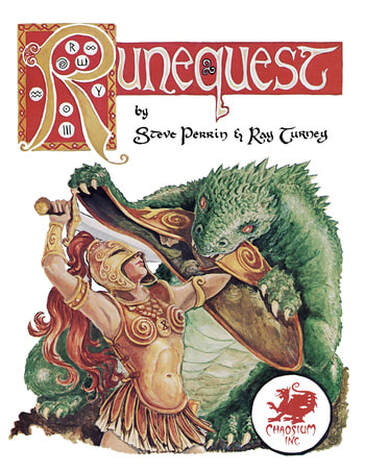 Since the numerous HASBRO/WOTC debacles of late, a great deal of you are starting to move away from D&D 5e. Some are choosing heavily ruled games such as Pathfinder and others have begun a long journey into the older play style which goes all the way back to when Dave Arneson began running his Blackmoor campaign in 1971. To all of you D&D 5e players - Welcome to the wider community of RPG gamers! For me, it is wonderful to see a new exploration of older games. The simpler game systems that are not heavily mechanized to the point that referees have little space to individualize have a lot to offer. I also really want to avoid any kind of edition war sentiment. Whatever system was available to you when you started gaming is going to be your 'comfort food' game system. You know it inside out and it is easier for you to use than anything else. Keep playing what you know, but also consider other RPG games. I always urge gamers to go back to the older games for inspiration by finding a copy of Original Dungeons & Dragons, Tunnels and Trolls, Empire of the Petal Throne, Rune Quest, TFT: In The Labyrinth, or even Traveller. All of these games offer an entirely different game experience from what may be familiar to you and may add to your already existent campaigns. Now is the chance to become a much more well rounded RPG gamer and also, exploring other systems doesn’t have to be costly. Old games can be found on Ebay, or as PDFs. In some cases they are even being reprinted today. Some are even free. A copy of Basic D&D is on the web here: https://www.americanroads.us/DandD/DnD_Basic_Rules_Holmes.pdf If you are a gamer without a group, I will even leave these links to the rules and a wonderful solo adventure for Tunnels and Trolls - yes, even solo play can be fun. The original rules: https://www.drivethrurpg.com/product/108306/Tunnels--Trolls-Rules-4th-Edition A very good solo adventure to play through: https://www.drivethrurpg.com/product/54802/Sword-for-Hire-TT-solo 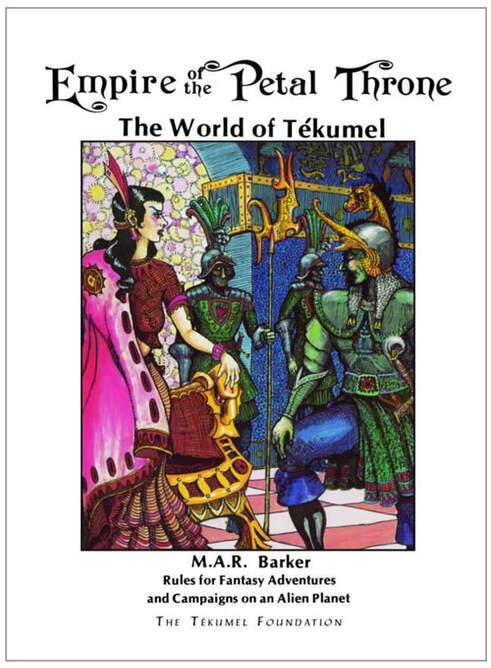 There is the blanket term of OSR for anything that is not the current D&D edition. I would add, 5e is now part of the OSR realm of D&D editions. And, of course, there are many non D&D fantasy games, as well as an endless supply of non fantasy settings that one can explore. For someone who began with newer editions, beginning around 3rd edition, the constantly evolving low ruled style of the early games may be a bit confusing. The premise that Arneson described when he demonstrated his Blackmoor game to Gary Gygax for the first time of “There are no Rules” may seem entirely alien. What did Arneson mean by that comment? How can we play a game that has no rules? An Adventure Game is not a computer program. Not all situations can be handled in a realistic manner by simply rolling some dice and tabulating the result with a cross referenced attribute. Rob Kuntz is known for stating, “You cannot rule reality.” What he means is that in an ever changing real fantasy world experience there are too many variables to track and you can’t model a reality with simple die roles according to simple one size fits all rules. What you need is a Referee, or Judge, who is fair and impartial that can make decisions about what is happening in any situation and can apply these decisions to the game play. The earliest editions of RPGs had rules which covered player attributes, movement, how to conduct battles, how magic spells work, and some very basic rules for listening at doors, opening doors, and finding concealed objects. Everything else was up to the Game Master and players to work out amongst themselves. The minimal rules led to a greater level of flexibility for the referees. It allowed them more freedom to create things ahead of time that the players could then discover. It also led to having unique encounters creating a truly magical feeling for the players. Perhaps the greatest difference within traditional play is how weak players are to start out with. New characters are like young adults, or even teens, who are setting out to make their way in life. Thus your ability is limited and the situations and creatures encountered are often deadly. Players will often choose to avoid some encounters. 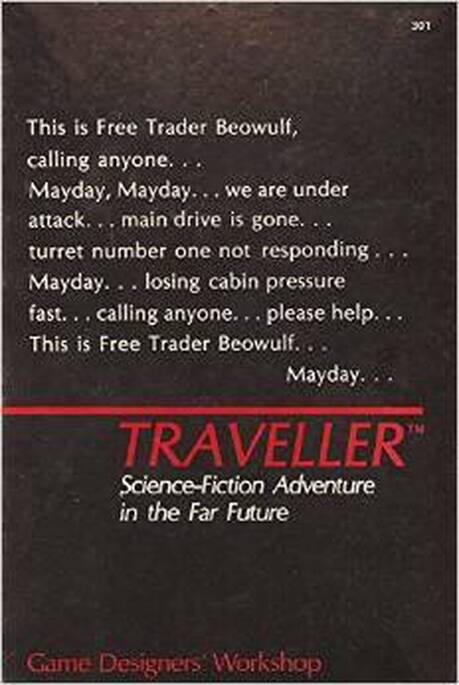 Wandering into a dungeon or wilderness away from civilized society is a terrifying experience. Everything one encounters is mysterious and enchanting in its own way. Yet, as mentioned before, it can also be deadly for your characters. The older D&D basic set I linked is only 44 pages long, yet it contains everything you will need to play up to 3 levels of a game. It has a sample dungeon, but you can easily create your own. My advice is to read the sample and them make your own because it is easier to run something you made up yourself and you will also need a bigger 3 level dungeon anyway. There is a reason the old games were so popular. They ware fast playing, and also, a lot of it was very Do It Yourself. You don’t have to spend a lot of money to have fun exploring a magical RPG world with the older games. Of course, another way to learn how to expand how you play your RPG is by watching Secrets of Blackmoor: https://www.amazon.com/gp/video/detail/B087QN51WF/ref=atv_dp_share_cu_r Until next time, Griff Finally back from Gary Con. I managed to get sick on the return drive. It made the trip into a hallucinatory journey for me. But I am now fully recovered. Today is the house game group day. YAY, I can look forward to playing tonight. Thankfully, Bob Whelton will be running something so I can take a break. I’m not burned out, yet, I put a lot into doing the annual Gary Con games I run for people. I do not run a massive schedule of games. An aerial war game session over Blackmoor, a movie screening, a large naval battle, and the annual descent into a Blackmoor dungeon with Tonisborg. Each session requires its own particular kind of energetic investment to have the game, or event, be enjoyable. This year only one person came to the Battle in The Skies over Blackmoor. Thus I offered to show up and talk about the game rules and also gave away a book and a T-shirt. As we chatted an original Blackmoor player I had never met wandered up to the table. To be precise, Paul Stormberg dragged him over and introduced us. The failed game session turned into a long discussion about original Blackmoor. This is why I go to GaryCon, I always meet interesting gamers. This time it was Phil Grant. The Fletcher Pratt Naval War Game was a huge success. Despite someone not showing up, another someone off the wait list decided to stop in and see if there was an open slot, thus I had 12 players. PRO TIP: If you go to a convention and the schedule is full for a game you want to play - make sure to show up anyway! People who spotted the game being played showed interest as well. A lot of experienced players were asking me if there was another session scheduled because they really wanted to play. Next year I will add another session to the schedule. The movie screening was lightly attended. Yet, the audience was really appreciative. One person came up and described being in tears by the end of the film. And yes, everyone got a gift for being there. Giving things away seems to be a theme for us. In previous years I have given away boxes worth of old games from the 80’s and 90’s. This year we gave away our own game books, T-shirts, dice bags, and Emergence of Blackmoor maps. Oh, and imported candy from Croatia. I have a box of old valuable games and may bring some old TSR modules to give away next time. I hate to see good games sit in my house unplayed. I’d rather know they are getting used by a game group and being fully enjoyed. Chris commented that our events are like parties where everyone gets a prize just for being there. After all, it’s GaryCon and it should be special, as the event honors Gary Gygax without whom TSR and all the games we still play and love would not exist. Gary Con takes a lot of effort and energy. Just now, I was sitting outside sipping my morning coffee and it came to me that although I am fully immersed into my campaign creation to the point that I doubt I could write everything I think of down, I need some time to gather my referee energy before I can run a game again. Sure, I can run a game. Running a game is easy. I’ve been doing it for over 45 years now. What I want out of running the world of Blackmoor is a feeling I get when I do it well. I do not want to go through the motions. I want game sessions where everyone involved feels they have done something unique and that on some level the communal energy while playing transcends the ordinary. This is no tiny pondering about gaming, it is one of those deep think times where you realize you had a new insight. I often hear gamers say such things as, “Oh, when we play our game we are story tellers!” It is a mantra new gamers tell themselves and others all the time, usually while trying to convince you they are doing something special. Story Story Story Story Story Story Story Story Story Story Story Story Story Story Story Story Story Story Story Story Story Story Story Story Story Story Story Story Story Story Story Story Story Story Story Story Story Story Story Story Story Story Story Story Story Story Story Story Story Story Story Story Story Story Story Story Well, sure, but I feel good referees do more than convey stories. I know the best games I have ever played are more about state. What are we doing to our mental state. Are we transporting ourselves into a dream? Story is the launching point. A good story puts you in a different state. We enter the dreaming. And the RPG dreaming is not something you can simply conjure up without the combined play between the players and referee. You need everyone involved mentally present and also a bit of luck! I wish I could claim to be the greatest referee out there. I work hard at creating something special for every session I run. Sometimes it will fly, other times I end up with an “oh my god the humanity” Hindenburg moment. Some of you will likely know what I mean by this. I will say I do try to make every session feel unique for myself. The last thing I want is to feel like I am phoning it in. If I ever feel I have run out of referee magic, I will likely hang up my dice bag and stop playing. No game session should feel ordinary! This is the struggle for referees who chase the dreaming. You have to try out strange ideas to keep your sessions feeling fresh for you and your players. New approaches for how you present your world to your players. You also need players who engage with what you are presenting. Passive players who expect the referee to dole out gaming joy will never experience the dreaming. Another aspect to the dreaming is the game environment. There is a reason most gamers play within controlled room environments. Distracting spaces can ruin the dreaming. Much as I love conventions, the big rooms full of tables full of gamers full of roaring voices, ruins the dreaming. I could never run a game in a space like that because I can’t do what I do when I run my game. One game that I suspect is very successful at Gary Con is the Order of the Owl. It is a game that gets played in a little corner of the convention; tucked away in a stairwell of all places. Although there is a lot of traffic going through the area, where the game takes place is off to the side and very quiet and intimate. What is most interesting about it - it is a walk up game. Anyone can play. There are always extra chairs and you can just jump in and play. The referee runs the game nearly non stop for days on end. It is just there for anyone to take part in. For my one annual game session GaryCon lets me use a conference room where we can close the door and enter the dreaming.
Somehow, this year, I ran one of the best games I have ever run. The players were engaged and I felt like I as referee had entered the dreaming. We could switch between game talk about mechanical things and dreaming the experience of being in the dungeon together without effort. I always feel like I run good games at GaryCon, but this group of players had some kind of mojo going from the very beginning. They were there to be together as a team. I did not have to herd them into good play technique. They were the ones who decided very quickly on a party leader who did most of the talking with me, and would discuss situations amongst themselves before taking actions as a party. The entire game ran smoothly as the players helped me to focus on my duties while they focused on theirs. I was impressed to have the players create a marching order with the halfling moving forward to scout and explore. It was understood that aside from the alteration of having the halfling do scout work, if anything was encountered, the marching order was also the hallway combat order. They picked up on my DM cues. At one point a player was interested in examining something and I said something like, “It seems ordinary…” The player took my cue and we moved on without role playing the details of a non event that would have wasted game time. When something needed adjudication on the fly I asked for a grey roll and then told them the results. No one questioned what I was doing, since they can’t know what the roll is, or how it works. They trusted my judgement as referee. At one point in the game I ran a combat that was very large. A party of 14 characters, one mule, and a pet rat v.s. 21 Kobolds. Because I run original rules, it is entirely a make believe experience without miniatures. Due to the collaboration between players and referee it was over in about 7 minutes! As a game being run in the open format of Original D&D, the focus is exploration. No time was wasted on narcissistic drama about “My character is a special…” We only had 4 hours of game time. The players were there to forge deep into an old dungeon to grip it and rip it. Exploring was job number one. I am still amazed at how well the game ran. I suspect everyone was an experienced player as all the in game suggestions were good ideas, with everyone being polite in voting for or against party actions. I am still scratching my head over the game session. A room of 10 strangers and me, their referee, managed to coalesce into a well oiled gaming machine that played a near perfect game. I’m not talking about perfect in terms of tangible goals either. What I mean is that everything ran smoothly even when the party was being T.P.K.ed by wraiths in the final encounter of the night. It was the overall experience that was perfect. I can’t know if everyone felt as I did. My hunch is that everyone had an exceptional game session. Most of the players stayed until the very end with only one leaving a mere 15 minutes before the end of the session. Original D&D play is a collaborative game form. Everyone in the session has to do their part and contribute to making each session be extra-ordinary. What can you do to make your own experience flourish? It isn’t about being the best or in any way competitive. Is it simply about being fully engaged in the moment? What can we do to raise the bar in our own game sessions? HERE IS A LINK TO PART OF THE LIVE STREAM OF THE GAME SESSION: https://www.facebook.com/blackmoorsecrets/videos/601847208200528 Thanks for reading and pondering with me - Griff Please share my article, tell your friends about Secrets of Blackmoor, and perhaps be kind to each other. The Lost Dungeons of Tonisborg is published which is wonderful, yet, there seems to be some confusion regarding the purpose of the book. Dan and I had assumed most users of the book would understand the underlying premise being this: Although the book is about the old dungeon maps, the only way to understand the maps is via a tutorial on play methods and a set of rules specifically designed for the play style for the time the maps come from. Very simply, if the maps had been published as the section on history along with the maps, and without any of the other sections, the maps would have lost what they need most, which is context. The only way to fully achieve the context within which the maps can be understood is through play. Today I came across this review which appears on Reddit with a link to a blog review. The Reddit post: https://www.reddit.com/r/osr/comments/11ipa1b/weekly_osr_vlogblogroll_round_up/ The Blog post: https://mystical-trash-heap.blogspot.com/2023/03/review-lost-dungeons-of-tonsiborg.html?m=1 These days people tend to get angry when confronted with criticism. I work to avoid reacting emotionally and engage with what I see in a review such as this. After all, I may be wrong and the reviewer may have a point after all. What I think I see is a simple misunderstanding. What follows is my response to the reddit post, which I am duplicating here: The big complaint seems to be about the extra junk. A lot of thought went into producing that book. The analysis of play technique was extensive. There are even new items and examples I have not seen anywhere else. The rules draw extensively from pre-publication drafts, OD&D, and Gygax and Arneson house rules. Dan spent years on his rules and I expect as with all RPGs he is still updating his work. My greatest concern is play technique. It is a dying art. I've watched people play RPGs and it seems like everything is more of a video game on paper - Tonisborg preserves the old ways, which are a verbal tradition for play that has been handed down player to player. My background with D&D: I started with Holmes Basic in '77 although I had played D&D on computers as early as '75. I actually thought DnD was originally a computer game and was delighted to discover a paper version. How clever to take a computer program and turn it into a game you play at home when you are away from the PLATO mainframe at CERL. https://www.youtube.com/watch?v=hdPrzb534TY&t=297s You can still play it at cyber1.org The real treat on that system is the first multi player StarTrek battle and take over the universe game, Empire. Most RPG gamers shy away from the kind of game I like, which is Grip it and Rip it computer gaming and war games. Yet, if you are interested in Empire, we need players. Get a Sign On and I will personally teach you how to play. We are the oldest Multi Player Computer Gamers in history and our player base is literally dying. We can only muster about 6-8 players for the Sunday "Griff War" anymore. I digress. Back to Holmes... I bought a copy of the 5e start set. I was curious, What is this game? I could not make heads or tails of it. It is so poorly written and organized. It is nothing like my Holmes edition which gives you everything you need to know on how to play D&D in only 45 pages! Tonisborg is a very old artifact that is very incomplete without an explanation on play and a set of rules. Thus, the entire Tonisborg book has to be the way it is. For anyone who was not playing RPGs in the first 10 years there is no context for what Tonisborg is. To most gamers today it is just another set of maps. To publish it without a way to revive it would be a travesty as people would entirely misunderstand it. Most of what exists in an RPG is what I call Informal play. It is the exchange between player and referee that is not covered by the rules. This is what the entire book discusses through example. Idealy, anyone purchasing the book will attempt to breath life into an old dungeon and play it. This is when the maps become what they truly are, which is a living thing as a game environment. Old Refs will read the How to Play section and know all of those tricks. Yet, it is likely they will come upon something they used to do and for some reason stopped doing. Thus even an old hand may treat the play section as a refresher course on how to referee a solid game. Champions of Zed - Dungeoneering Edition provides a complete system for resurrecting Tonisborg. Yet, Tonisborg is easily played with pure 3 LBB with or without supplements, all the way up to BX. I am about to do a TFT:ITL adaptation. I can see why the reviewer has so many issues with the book. As the authors we have worked to provide an entire Time Machine Gaming Experience back to 1973 between the covers of Tonisborg. The 3 sections are inseparable, or Tonisborg has no historical meaning that can be carried into the future. To the author of the review: Consider that your experience and knowledge may seem like common information on how to play an RPG, yet, what you do in a game resides within an oral history and tradition that could be lost. If the second and third parts of the book seem redundant to you, then the book has succeeded in preserving even your game methods for posterity, and they will now continue to be passed down through generations of gamers because you are part of this living game as well. Thanks for the review - Griff That's all I have for now.
Please tell a friend about Secrets of Blackmoor and Tonisborg by sharing our links on your social media. We can only keep producing game related items such as the movie and book through grass roots support from you. Thanks! Griff
|
DVD'S, Books, T-shirts, games and more available on our store.
AuthorSecrets of Blackmoor is a Feature-length documentary about the birth of the “Mother of all Games;” Dungeons & Dragons. Archives
January 2024
Categories |
Privacy Policy
All Contents Copyright © 2023 The Fellowship of the Thing, Ltd. - All Rights Reserved
All Contents Copyright © 2023 The Fellowship of the Thing, Ltd. - All Rights Reserved

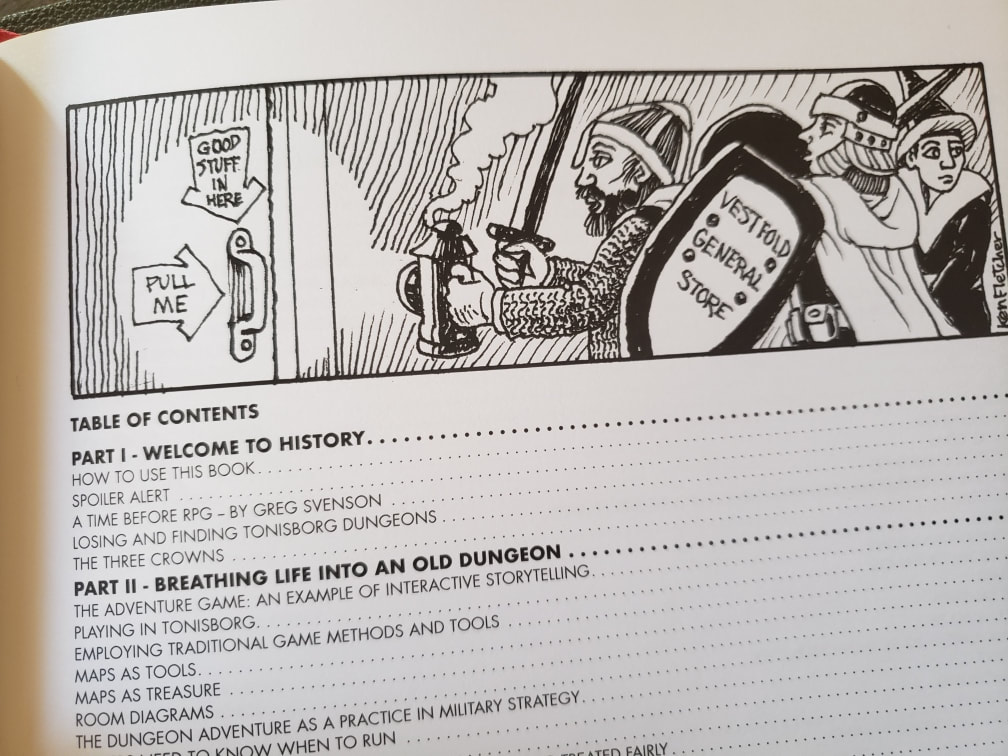
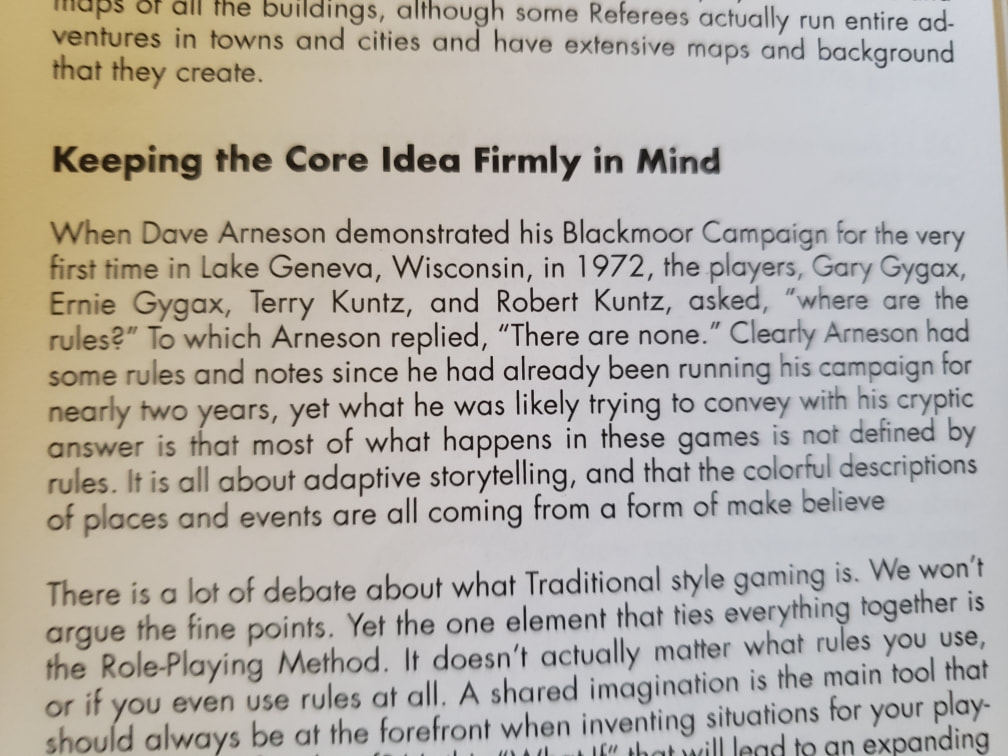
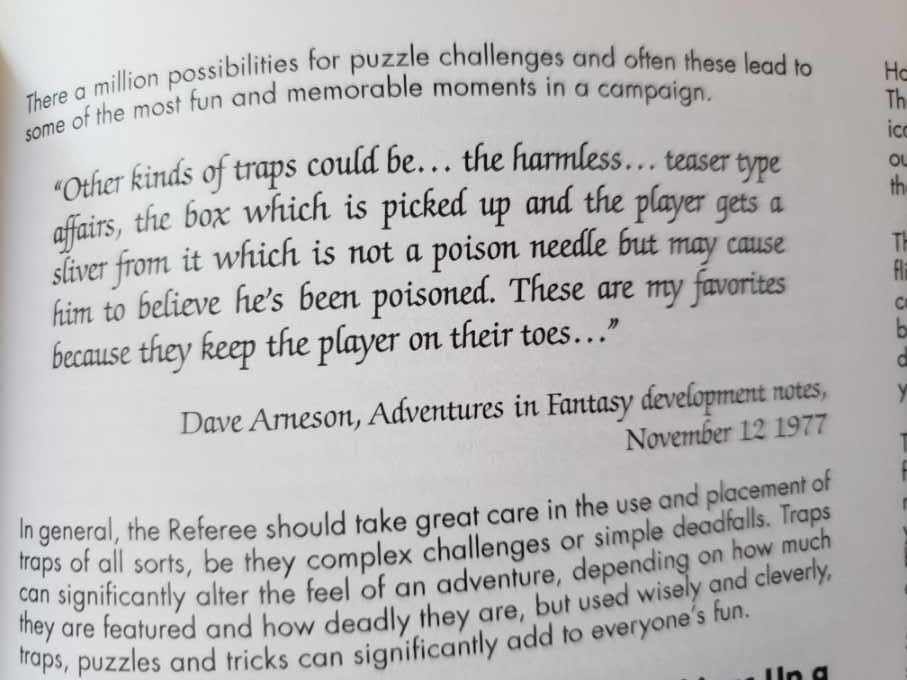
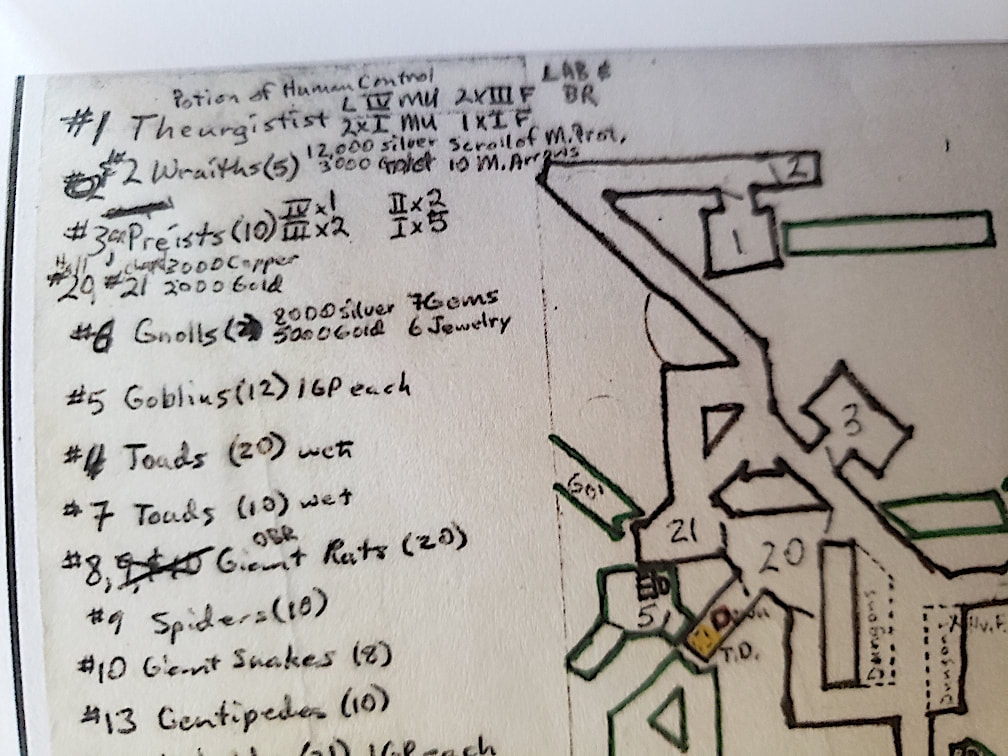
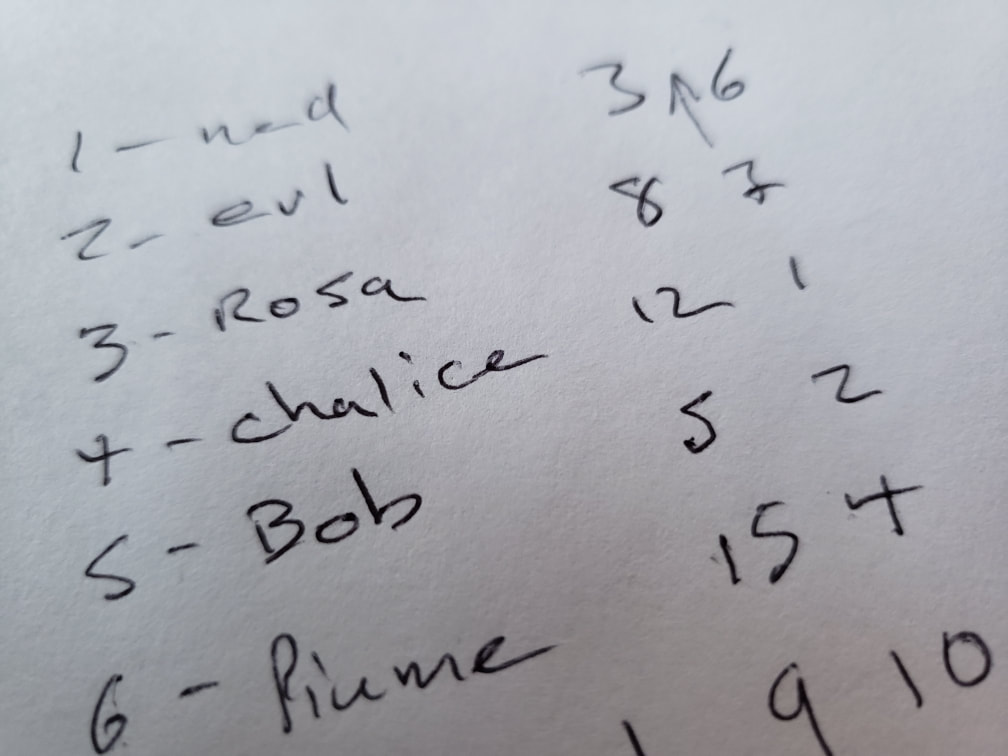


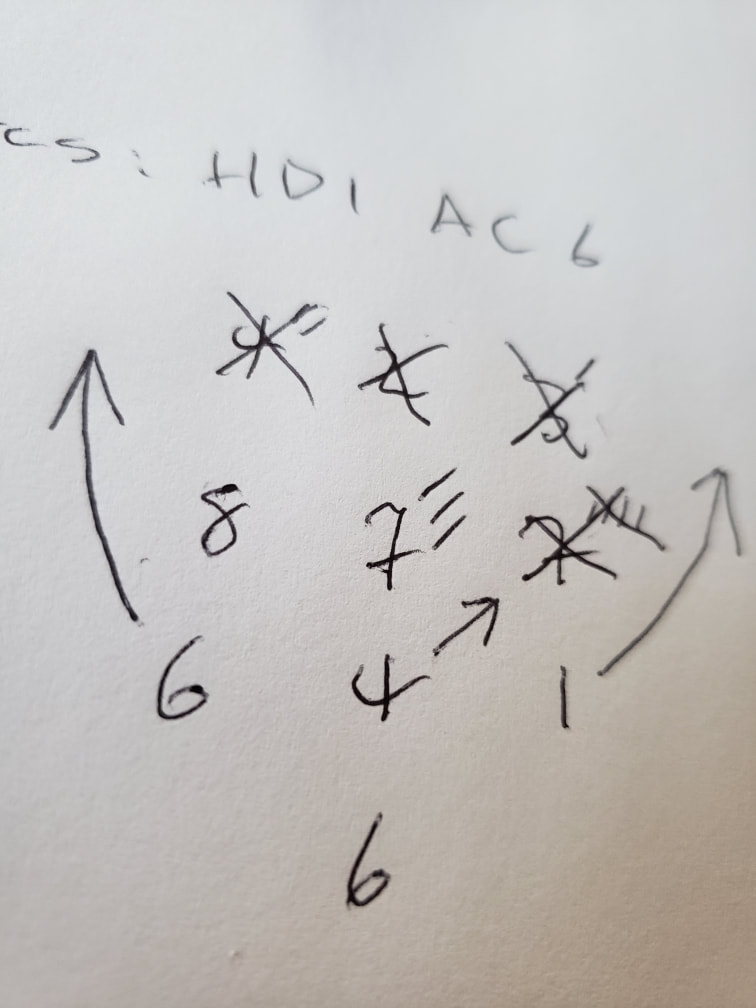
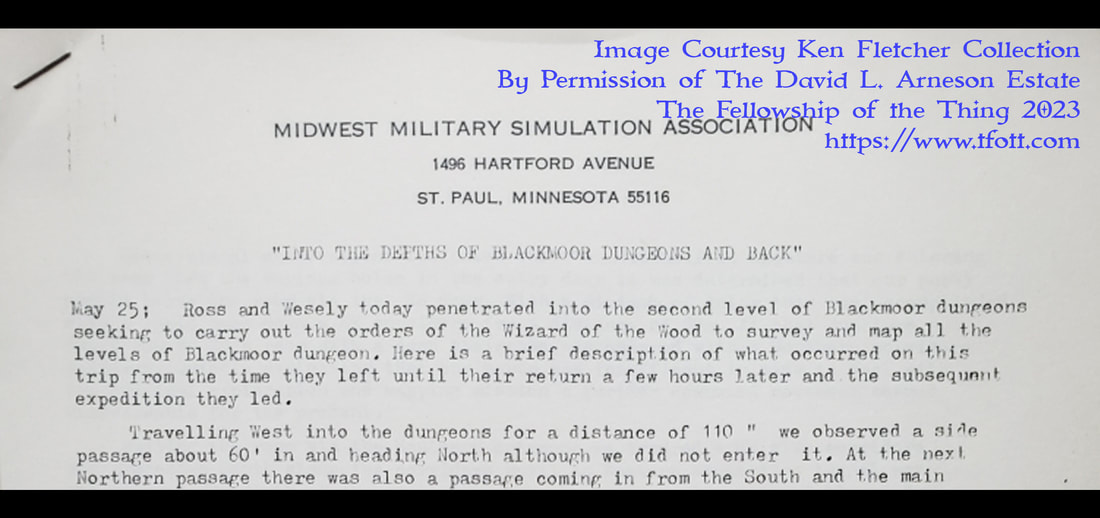
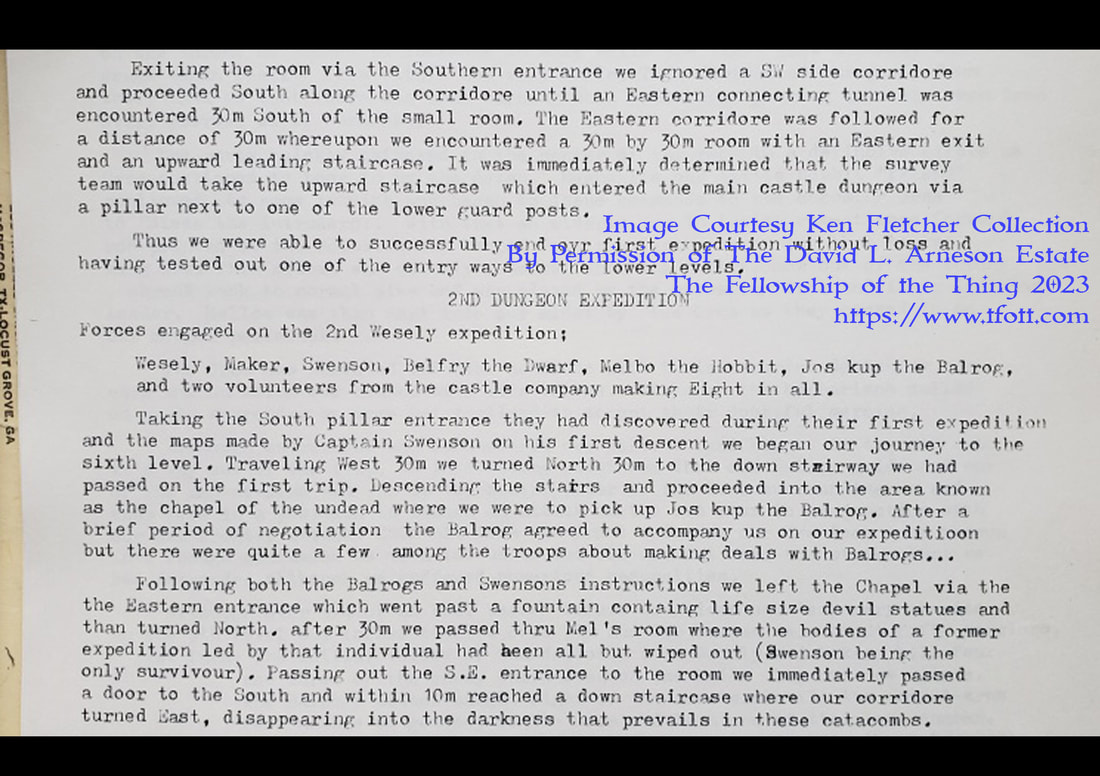
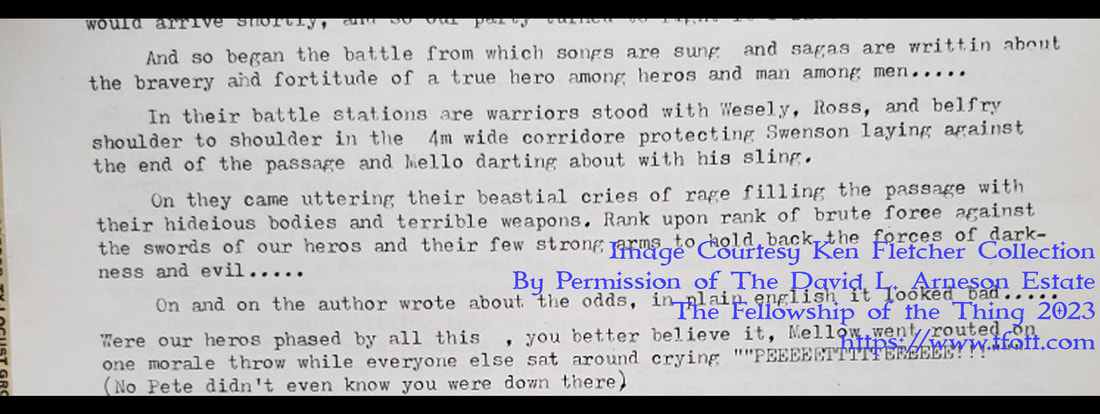
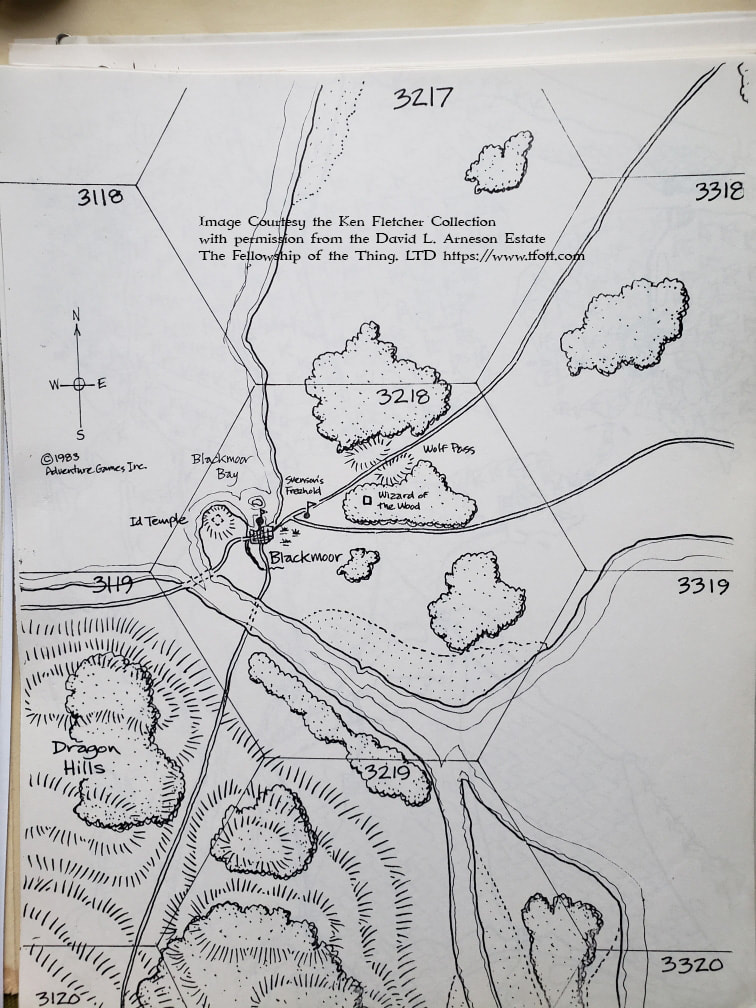
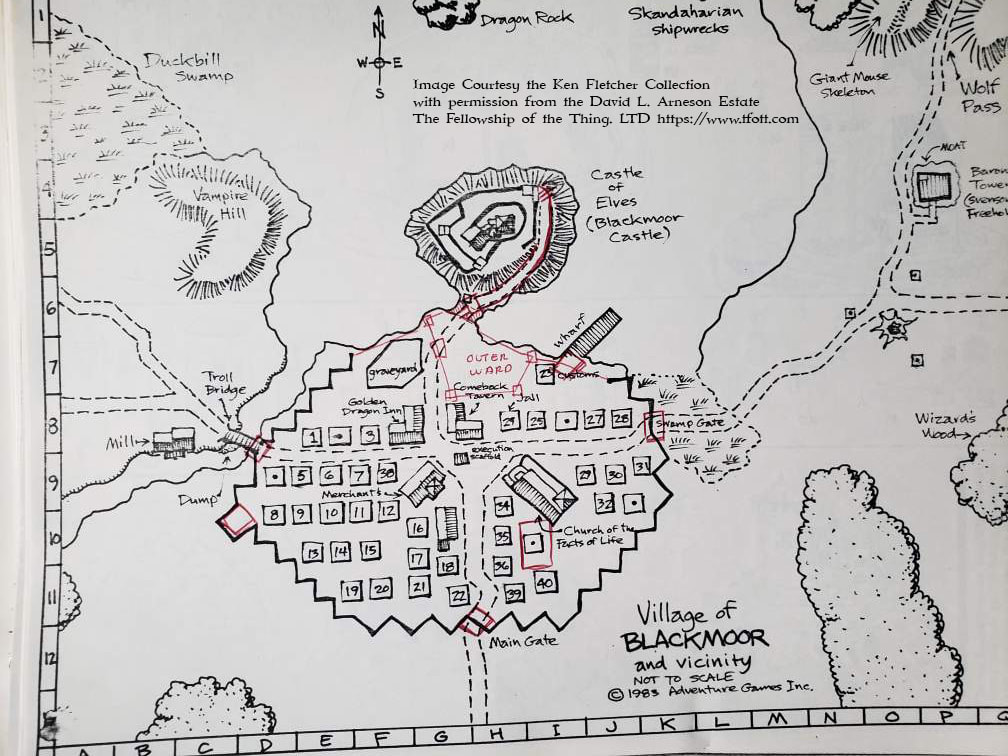
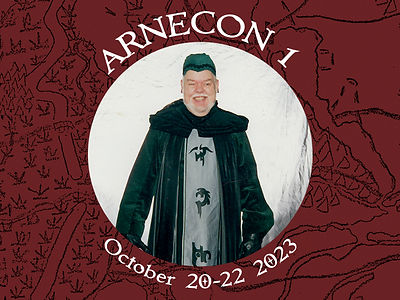
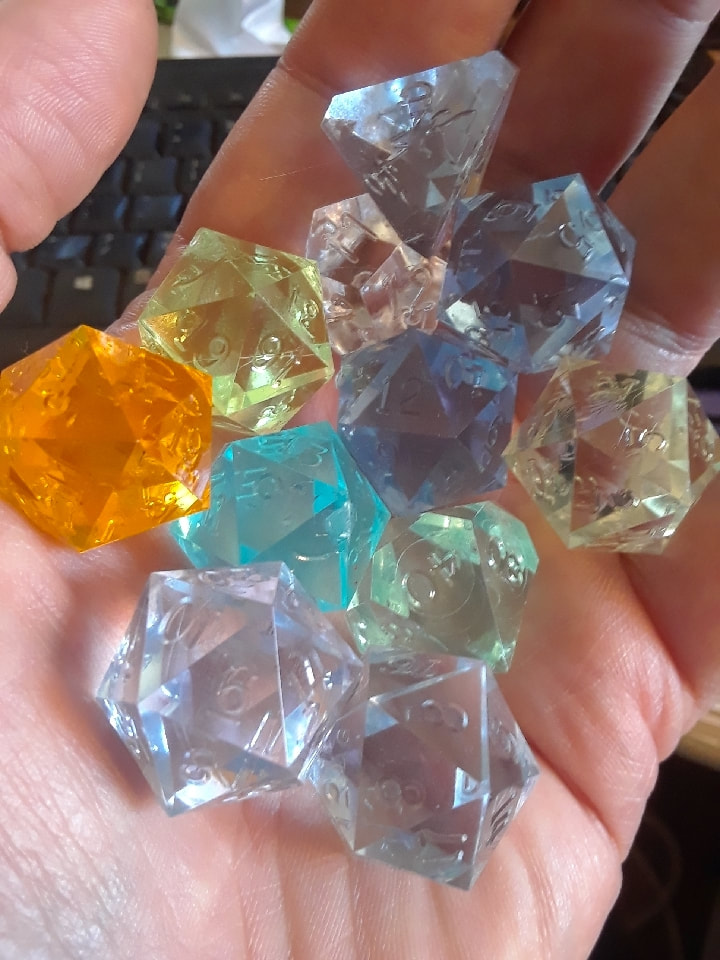
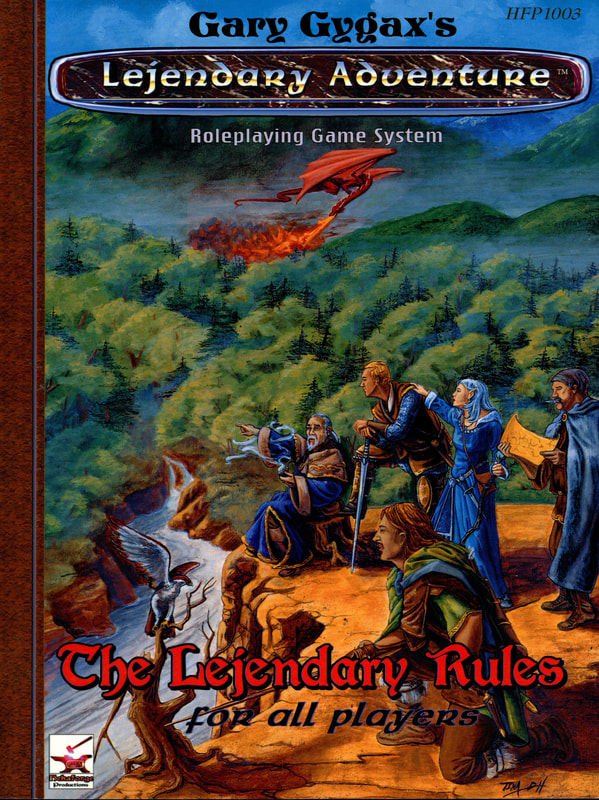
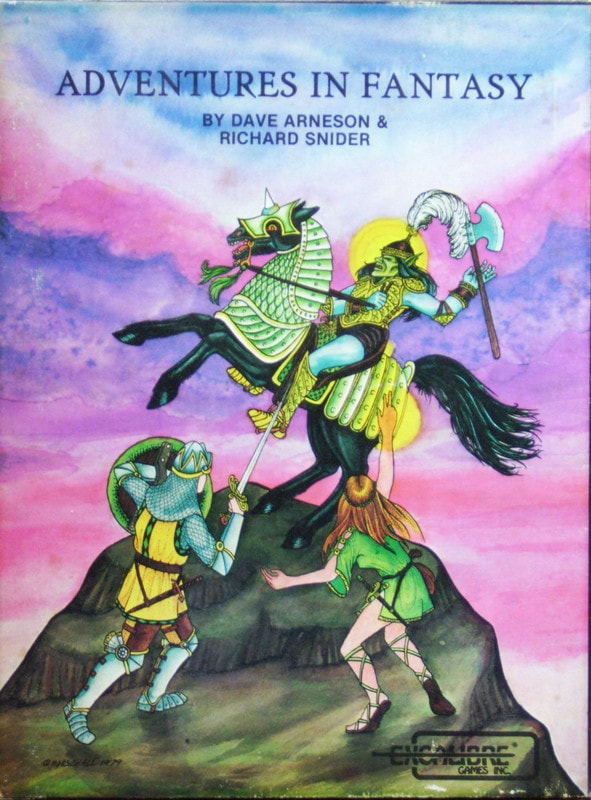
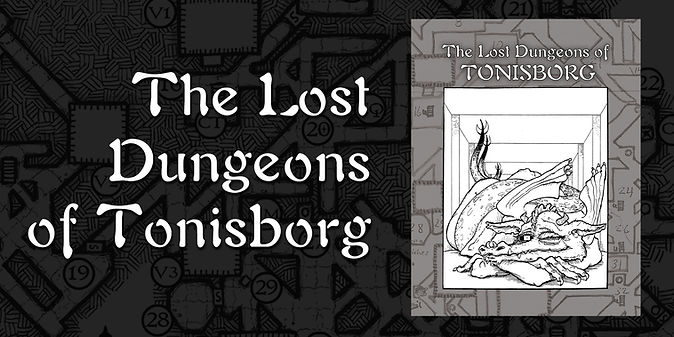


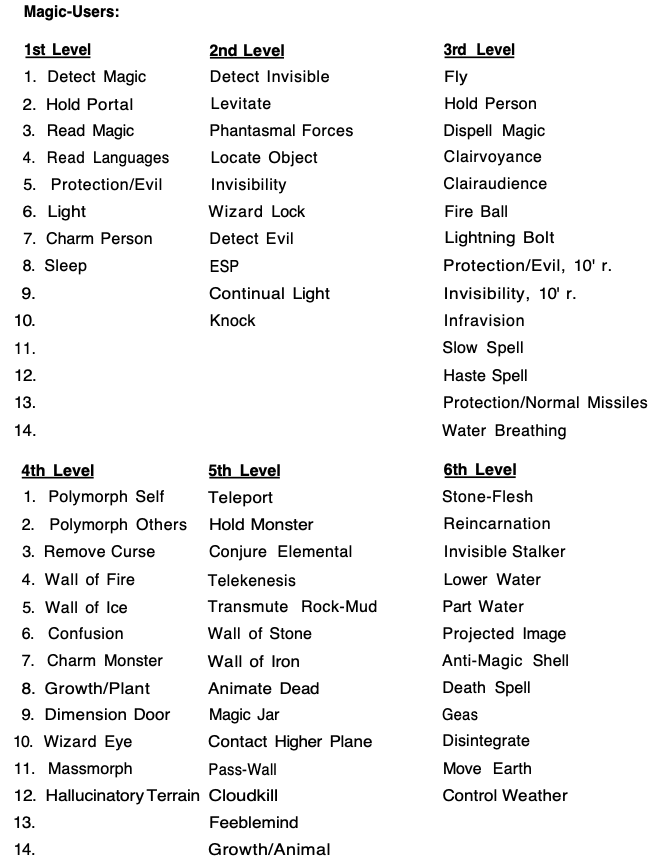
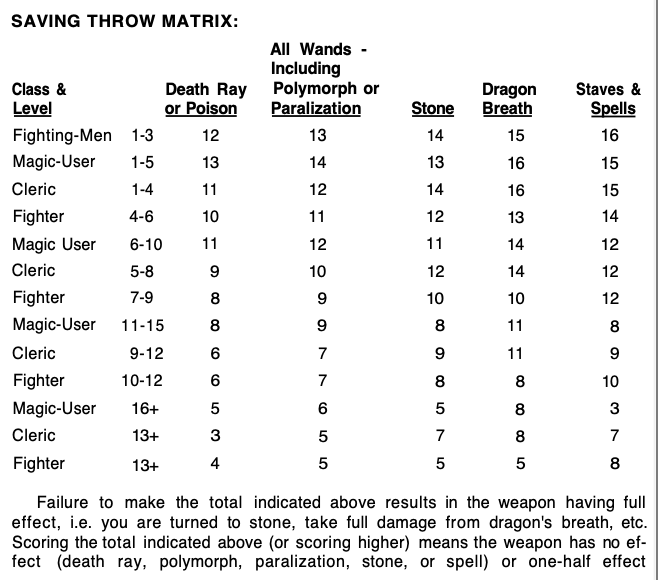
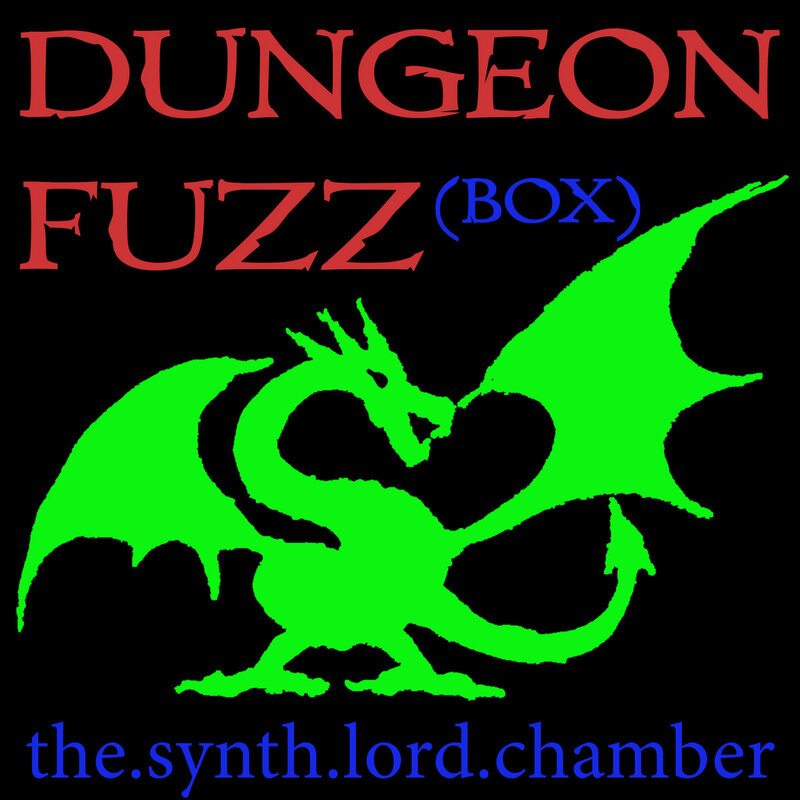
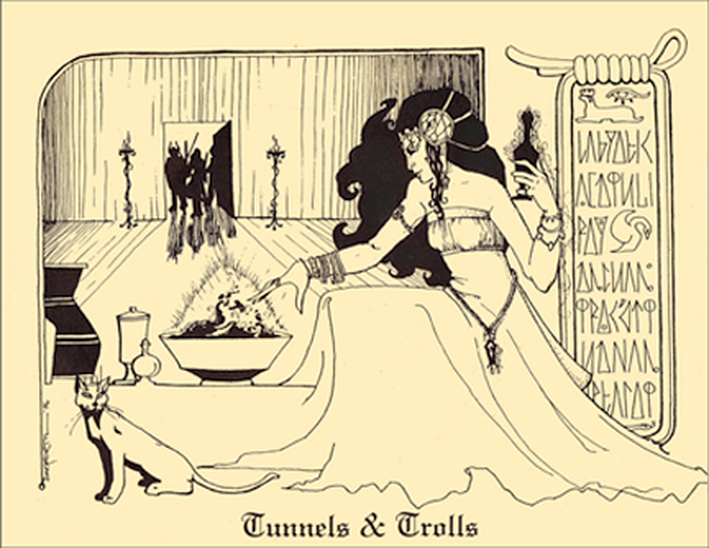


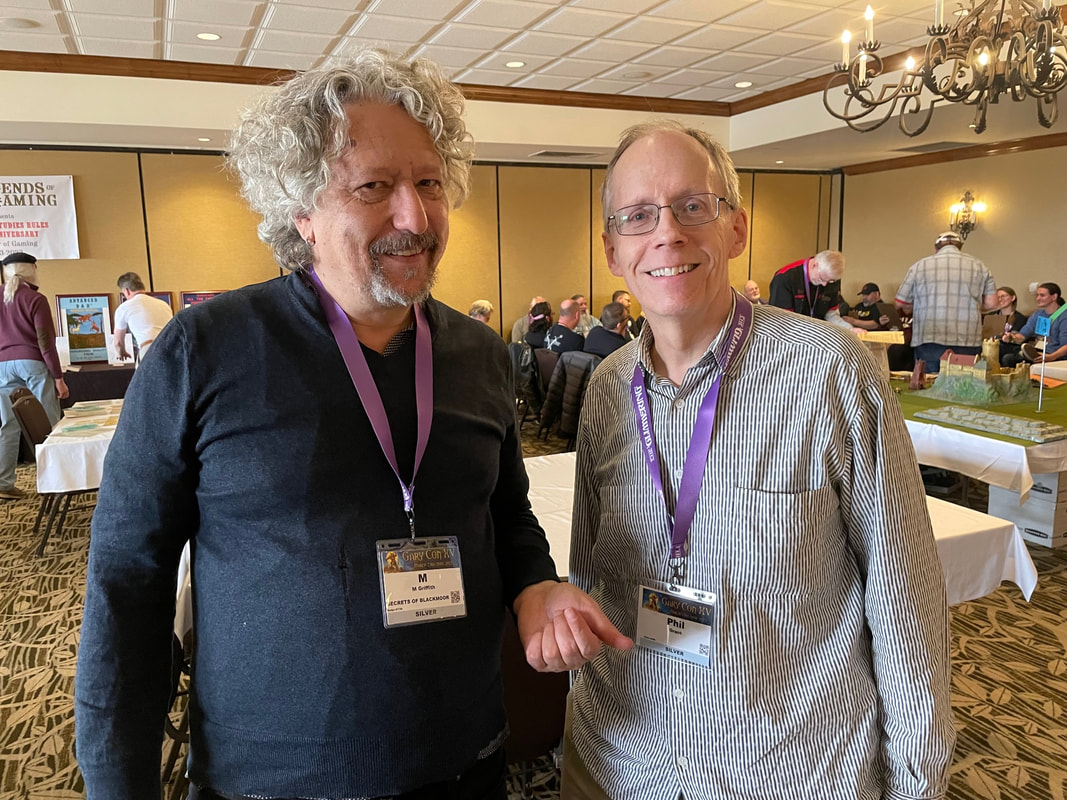
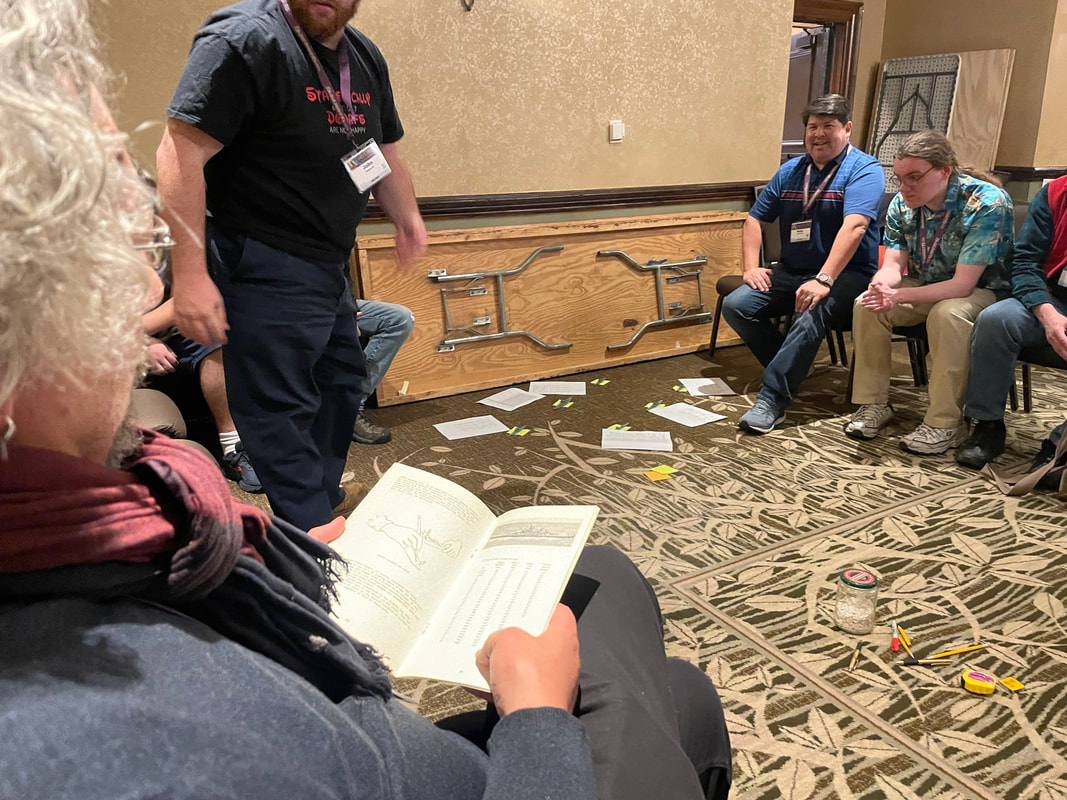
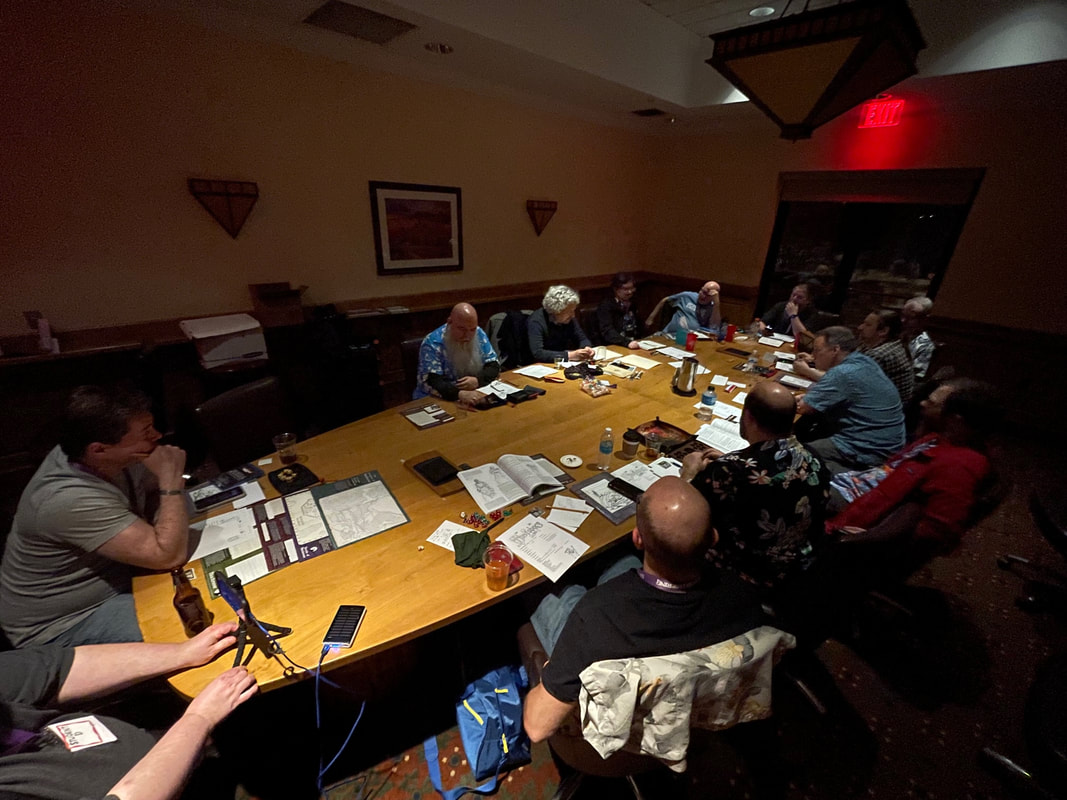
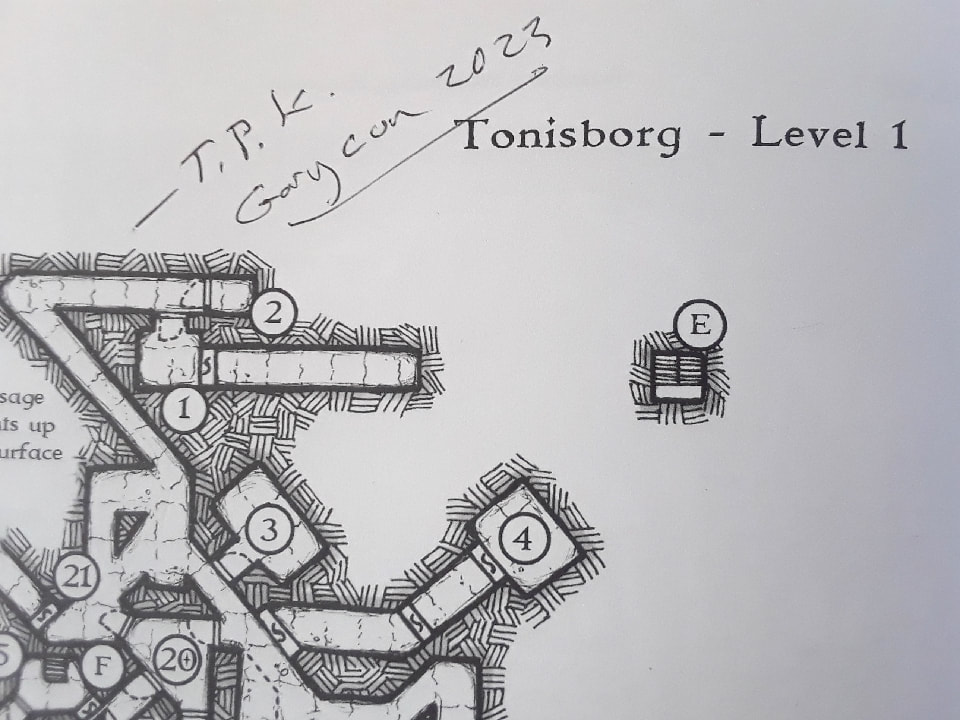
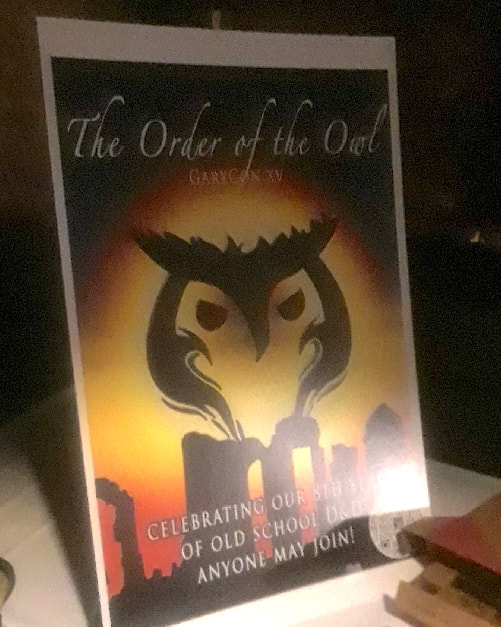
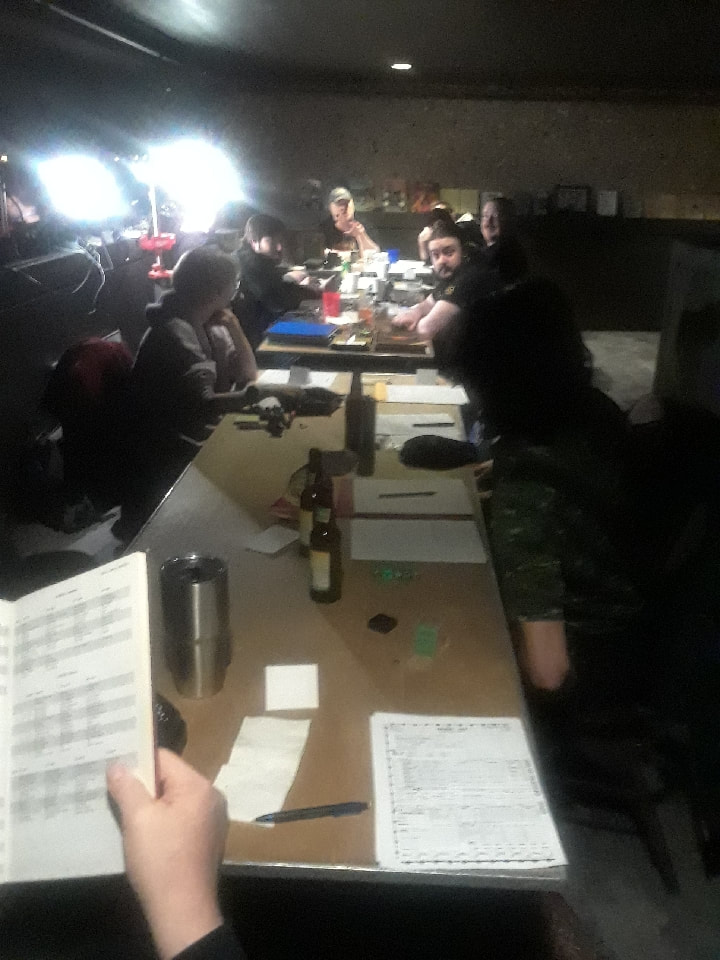
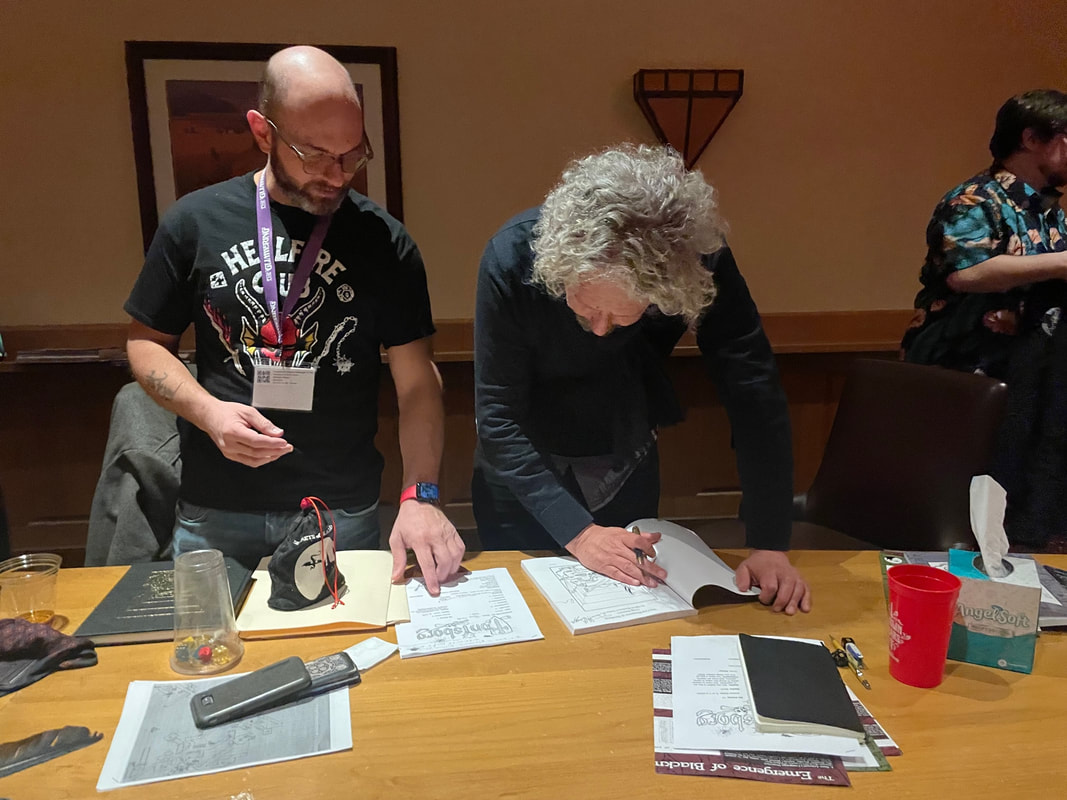


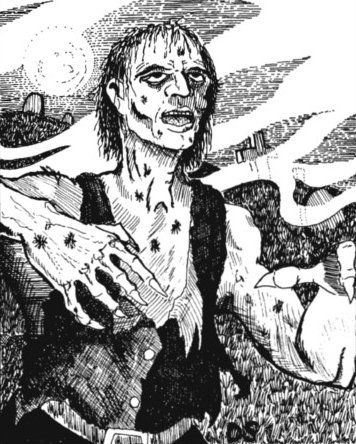

 RSS Feed
RSS Feed